News
- Details
- Written by: Quintus Potgieter
- Category: Developments
Technavio Research is the leader in technology research that observes a global market and can generate statistics based on their findings. They have recently looked into the impact that global industrial automation is making and watching its trends to predict what it is going to do in the future. The report they have released is called: Global Industrial Automation Market in Life Sciences Industry 2016-2020. Included under the umbrella of life sciences would be things like robots and automated processes in the medical field, pharmaceuticals, any factories that process raw materials, biomanufacturing facilities, etc.
The researchers looked at the different systems in the global industrial automation market in life sciences that generate the income for the bio-engineering branches of several companies:
- Programmable logic controllers (PLCs): which account for 753.86 million USD of the market
- Manufacturing execution systems (MES): which account for 529.2 million USD of the yearly market
- Supervisory control and data acquisition (SCADA)
- Distributed control systems (DCS): which accounts for 1.4 billion USD of the market
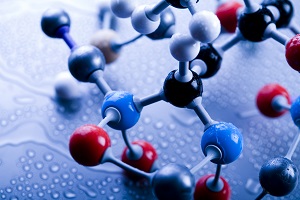
Technavio researcher, Bharath Kanniappan warned the industry, however, that they would soon need to adopt cloud-based solutions. He said: "Cloud-based software-as-a-service is likely to become the next logical step in the evolution of automation technology in the life sciences industry. Life science companies are becoming more comfortable with the concept of service-based technology architecture. Thanks to the shift towards a more cloud-based environment, they are expected to incur immense benefits such as reduced costs, greater flexibility, and enhanced functionalities."
The compound annual growth rate, according to the researchers, will reach 5% by 2020. Thanks, in part, to the adoption of cloud-based solutions in manufacturing execution systems, distributed control systems and SCADA systems. They also estimate that the industry will be worth US$ 5 billion by 2020.
The companies that have the monopoly over the global industrial automation industry in life sciences are: ABB, Emerson Electric, Rockwell Automation, and Siemens.
Source: Business Wire
- Details
- Written by: Quintus Potgieter
- Category: Developments
China is among the first countries to begin their implementation of security robots. The robots will be patrolling the Congqing district in China, and was built by the National Defence University. The robot has been named 'AnBot' and weighs in at a staggering 78 kilograms. It can travel at 11 miles per hour and stands at 1.5 meters tall. The university says that the robot also has anti-terrorism and anti-riot measures. It is also allegedly capable of eight hours of "continuous work".
Xiao Xiangjiang from China's National University of Defense Technology said: "AnBot has a high degree of autonomy, it could patrol, avoid obstacles and identify and charge on its own."
Edward Snowden gave his sarcastic two cents about the robot, saying: "Surely this will end well."
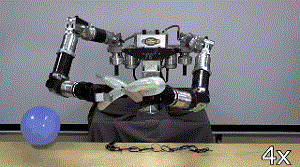 Elsewhere in the robotics world, engineers have been working on dexterity in robot arms and limbs. RE2's Robotics High Dexterous Manipulation System, according to Daily Mail, can tie knots, open zips, make balloon animals and more. RE2 is a company in the United States and maintain that their dexterous robots could one day be the helper around the house everyone has been searching for. And the replacement of clowns at kids parties, evidently. Kidding aside, the company is also certain that it will be able to form part of the ever-growing list of robots that are assisting hospitals in their surgeries today and could attempt to diffuse potential bomb threats.
Elsewhere in the robotics world, engineers have been working on dexterity in robot arms and limbs. RE2's Robotics High Dexterous Manipulation System, according to Daily Mail, can tie knots, open zips, make balloon animals and more. RE2 is a company in the United States and maintain that their dexterous robots could one day be the helper around the house everyone has been searching for. And the replacement of clowns at kids parties, evidently. Kidding aside, the company is also certain that it will be able to form part of the ever-growing list of robots that are assisting hospitals in their surgeries today and could attempt to diffuse potential bomb threats.
Bloomberg, however, maintains the most innovative and future-ready work in robotics is happening in MIT. They sat down with MIT computer science and A.I. lab professors John Leonard and Daniella Rus.
Leonard talking about the work they do in robotics said: "I think there's something special in the air at MIT, it's a very interdisciplinary culture. I'm in mechanical engineering, Daniella is in computer science, we work across boundaries between fields to work together to create systems that combine the best multiple disciplines and a robot is one of the best embodiments of that."
The MIT professors are hoping that in the next five years they would have made robots more intelligent, building robots faster and making robots and humans work alongside each other even more so than they are doing already. "In five years I think having a car that is much more highly automated that will impact your life," Leonard said. The professors also showed off a fully 3D printed robot that was ready to operate by just adding a battery and a motor.
NASA will also be utilizing MIT's robotics testing facilities after they gifted the university two of their Valkyrie humanoid robots to play around with. NASA's intention is to measure the feasibility of taking the robots to Mars and then letting the robots do tasks that would've required manpower in the past. Russ Tedrake, who is leading the project said: "Our work is about vetting the robot and seeing what is capable of. If we can integrate the autonomy work with our planning and control algorithms, it could result in an unprecedented level of autonomous capabilities for a humanoid robot." [Via: MIT Computer Science and Artificial Intelligence Laboratory]
Here the teams at MIT assemble the humanoid:
- Details
- Written by: Quintus Potgieter
- Category: Education
It's a question that some science fiction novelists have most likely thought about. How interactive can a single piece of paper be in the future? Could we develop paper that we can digitally interact with and use? Almost like in Harry Potter when you see a newspaper that has moving images on it, or in the cancelled Syfy show Caprica, where paper can be used to send a text message over WiFi. That might actually be a possibility in the near future.
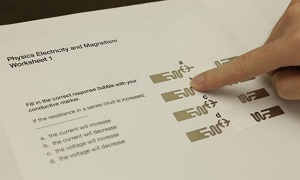
Engineers at the University of Washington with the contribution of Disney Research and Carnegie Mellon University has developed paper that will respond to gestures and could be connected to the internet. They are calling it Paper ID and have published the work under the title: A Technique for Drawing Functional Battery-Free Wireless Interfaces on Paper.
Lead author of the study, Hanchuan Li, who is a doctoral student in computer science and engineering at UW, said: "Paper is our inspiration for this technology. A piece of paper is still by far one of the most ubiquitous mediums. If RFID tags can make interfaces as simple, flexible and cheap as paper, it makes good sense to deploy those tags anywhere."
The researchers use inexpensive ultra-thin battery-free radio frequency identification (RFID) tags to create "paper input devices" as they have put it. The researchers say their physical constraints have been issues such as circuit size, wiring and power. However, the researchers have worked past these problems using the RFID tags that can pick up gestures and movement around the antennas that have been printed. Li says, "These little tags, by applying our signal processing and machine learning algorithms, can be turned into a multi-gesture sensor. Our research is pushing the boundaries of using commodity hardware to do something it wasn't able to do before."
As a result, the technology already shows amazing promise, and with Disney Research as a contributor, we're sure there is no lack of money with pushing smart-paper forward. It could have many different uses in many different industries.
Source: University of Washington
- Details
- Written by: Quintus Potgieter
- Category: Developments
Civil engineers in the United States have observed the current problem Miami has with floods. A new study by Miami-Dade County projected that due to the rising of sea levels, there will be a flood every day by 2045. Currently, Miami experiences 45 floods a year according to Fusion.net, this number would rise to 80. The Union of Concerned Scientists (USC) perused data that the Army Corps of Engineers compiled and as a result are issuing the latest warning for something to be done.
The USC have since released a report in which they say:
By 2045, sea level in Miami-Dade County is expected to rise about 15 inches above current levels, according to a projection by the US Army Corps of Engineers. With this increase, in just 30 years' time, flood-prone locations in Miami-Dade County's coastal communities would face roughly 380 high-tide flood events per year, and the extent of tidal floods would expand to affect new low-lying locations...
A one-foot increase in sea level is estimated to threated up to $6.4 billion in taxable real estate in the country overall

Now, what civil engineers are doing in the Miami-Dade County area could redefine what other coastal towns or villages do in the event that sea levels rise to the extent that they are in Miami.
The country has currently pumped $20 billion into storm protection efforts after Hurricane Sandy in 2012. The Army Corp Engineers were also tasked with surveying the areas in trouble of immediate flooding. They concluded that 6 million people are in vulnerable areas. The estimated damage that could be caused by 2045 is $616 trillion [Miami Herald]. It sounds like a civil engineering headache.
The University of Miami has also conducted research into the area and published their findings in a study titled: Increasing flooding hazard in coastal communities due to rising sea level: Case study of Miami Beach, Florida .
In the highlights section of the study, the researchers say:
Increasing sea level in the Miami area correlates with weakening of the entire Gulf Stream system.
Engineering solutions to SLR should rely on regional sea level rise rate projections and not only on the commonly used global SLR projections
The researchers are warning that Miami is an isolated case on its own and cannot be aligned with what is happening globally. What does, however, make the situation worse is the global climate change that adds inches to the sea level. The problem with Florida, according to the engineers researching at the University of Miami, is that they are most vulnerable due to the state's " low elevation, large population concentrations and economic importance."
Thus, engineers are installing new storm sewers and pumps, according to NPR. Miami Beach will also reportedly see a $400 million project that will include building 80 pump stations throughout the city. The more dire the situation becomes, the more civil engineers the state will look to employ to reverse the damage of oncoming tidal rises.
Here is a video with physical proof of what civil engineers have been doing since the end of 2014 in Miami. The government claims they will try and keep the Miami area dry for up to 500 years. Although, renewed case studies show that that is a tall order.
- Details
- Written by: Quintus Potgieter
- Category: Industry
As reported on yesterday, Hyperloop One, the company behind taking Elon Musk's desire to redesign the world of public train transport, was to conduct its first open air test. You can see the results of the test below...and spoiler alert...it's quick and disappointing to watch. However, to the engineers working on the project, it is what they need to gather the data and prepare for the next test.
The sled - seen in the video above - reached 2.5 Gs and got to 167 MPH before ending its run in a sandpit. The next step in the testing phase is putting together tubes that are currently at the test facility in Nevada and building a 1.5 kilometer (0.93 mile) test tube. The engineers are hoping they will be able to test out the levitation system and reach speeds of 400 MPH and more.
The video below is from Hyperloop One itself and drums up a bit more excitement for the future of the project. Engineers around the world are still criticizing the project and questioning its feasibility, however, time will tell whether or not this is a pipe dream or not.
- Details
- Written by: Quintus Potgieter
- Category: Industry
Caterpillar is in the news again, soon after they announced their energy storage offerings to the world. Now, in their Global Research & Development Center in the U.S., they have officially opened a 3D Printing & Innovation Accelerator center. Caterpillar produces most of the construction equipment you would see on sites today and will now be 3D printing some of its parts. The new center will also allow engineers to test out creative ideas
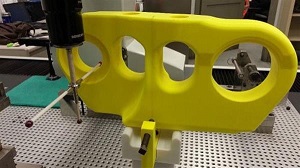
Jim LaHood, who works for Caterpillar's additive manufacturing team said: "The possibilities are endless in the factories. Things that are previously done out of metal that doesn't need to be -- like little tools and gauges -- can be made from plastic now."
Moreover, Caterpillar says they are not strangers to 3D printing. They say that they have printed 50,000 models over the last 25 years when 3D printing looked a little different than it does today. The company says it is glad there is now a cost-effective way to print that uses less energy and money.
Caterpillar is not allowing themselves to be left behind in the modernisation of civil engineering and how it is changing. They call this changing nature of the industry the 'Age of Smart Iron' and say they are prepared to take on the task. Thus, their energy storage solutions and 3D printing facilities show that they are ready for the immediate future.
But wait...there's more. Caterpillar Inc is not done yet. Chief Executive of Caterpillar, Doug Oberhelman met with ministers in Cuba in hopes that they can start moving some of their tools into the country and improve trade ties once the U.S. trade embargo is fully lifted.
He spoke to reporters, saying: "We have talked about a number of projects. I think the most interested one in the near term would be the Mariel harbor...making an efficient modern harbor that competes with others around the world." Caterpillar will be working with a Puerto Rican company in Cuba, named Rimco, who will act as their dealer over there, Reuters confirmed. "The idea is for our dealer to set up a facility here in Cuba. We would supply most of our products from Brazil."
- Details
- Written by: Quintus Potgieter
- Category: Developments
Never has electrical engineering and audio engineering come together in quite an innovative way. Sony has announced a new iteration of their LED light bulb speakers. Yes, you read that right...lightbulb speakers. Sony Japan quietly launched the bulbs with Bluetooth speakers embedded into them last year in July.

The only two reviews from customers who bought it from Amazon.com, left unflattering responses as to how the light-speaker fared in quality. The one review by an anonymous Amazon user read: "Speaker is loud, but lack any trace of mod and bass. Decent light output. A Sengled light/speaker bulb is miles better. The remote control is a cool and nice feature." Another one by a user named Alowishus wrote: "Not a good product, sound is terrible." Then again, the product was only supposed to be sold in Japan.
The speaker clearly lacked in quality engineering and did not live up to any sort of hype Sony Japan had made to ensure that it was a good product. Bear in mind, the speaker back in July of 2015 cost $287.30, a hefty price tag for a product that wasn't widely bought and got negative reviews.
However, giving Sony the benefit of the doubt, a new and improved version seems to be making its way to the mass market.
The preview for the new and improved speaker makes it look like a product we would all want to buy. So why then did they initially launch something that lacked in quality? This is just one example of the thousand of products that are engineered that sometimes lack in the area of quality design. Anything from new lithium-ion battery units to the latest bridge that has been built can have poor engineering design quality. This is something that should be avoided at all costs. Although, companies that release consumer products sometimes rush the product to market and get the negative reviews that they do.
"Quality is obviously one of the driving forces for anything we do in engineering, it's a critical area," says Steve Mackay, the Dean of Engineering at the Engineering Institute of Technology. In the 35th episode of the Engineering News Network, the Dean's YouTube series, he speaks of a man that the Japanese utilized in the history of engineering called W. Edwards Deming who assisted in improving the quality of products that they manufactured. Mackay paraphrases Edwards Deming, saying: "If you try and focus on costs, you will find your costs tend to go up and your quality tends to go down. If you focus on improving the quality of the process you will tend to drive the quality up and eventually the cost will go come down."
Mackay gives engineers currently working on producing high-quality products some useful tips in ensuring premium quality throughout:
- Try and understand the process and the system really well. You will, therefore, avoid imperfections in a product.
- Where the variations in quality are coming from. What causes imperfections?
- Understand human psychology: What is the psychology of the guys working on the product that produce the final high high-quality?
- Details
- Written by: Quintus Potgieter
- Category: Developments
Can Elon Musk proves the critics wrong once again? Could he and a team of engineers successfully show the world that a transport system that could travel 760 miles per hour is viable? Hyperloop Technologies Inc. has now become Hyperloop One in a rebranding announcement, rebranding so they would not be mistaken for another company with 'Hyperloop' in the name. Several other announcements about Elon Musk's dream transportation system were made to the media yesterday. Hyperloop One says they have received $80 million in venture capital financing and have built a network of engineering partnerships that will assist in hopefully making the Hyperloop a reality.
The group also announced that they would be conducting the first tests for the feasibility of a Hyperloop in the Nevada desert. The Nevada Desert is becoming synonymous with testing out products from Elon Musk-run companies.
Cheif Executive of Hyperloop One, Rob Lloyd, said: "The hyperloop is real. It's happening now." The propulsion test will be an open air test where the engineers are certain they will be able to reach 400 MPH. Later tests will be done in a vacuum-sealed chamber and will test the capabilities of a hypothetical Hyperloop and will try and reach 700 MPH. They would be using a 1-kilometer track and will test several of the engineered technologies that could send the Hyperloop into the future and into our cities.
The first level of criticism came from the experts who said that Musk's $6 billion estimate for how much the Hyperloop will cost was labeled unrealistic. Experts claim the Hyperloop would cost much more.
Lloyd told the Wall Street Journal: "We will reduce the cost of the hyperloop until it is two-thirds the cost of a high-speed rail system at three times the speed."
The rebranding announcement also comes with a new competition named the Hyperloop One Global Challenge. This will see the continuation of previous competitions of this sort which allow engineers to design mock-ups of what the Hyperloop might look like.
Visit the Hyperloop One website to see how far the engineers get in redesigning the future of public transportation.
- Details
- Written by: Quintus Potgieter
- Category: Industry
Are you keen on marine engineering by any chance? Submarine drones are the new buzzword when talking about the South China Sea this year. China has been slowly reclaiming islands in the South China Sea, so, to keep an eye and allegedly "retain its edge" the United States is sending submarine drones to patrol the areas around these islands.
Ashton Carter, the US defense secretary, said that the drones are able to navigate in shallow waters, something that submarines cannot do. He also said: "Countries across the Asia-Pacific are voicing concern with China's land reclamation, which stands out in size and scope, as well as its militarization in the South China Sea."
The U.S. want to, as Carter put it, ensure their navy efforts are the "most lethal and most advanced undersea and anti-submarine force in the world."
The Financial Times reported that the U.S. allegedly also want to build a submarine that would have smaller drones within it that could be deployed.
Then the recent announcement of the automated boat the United States Navy had built was announced.
Meanwhile, engineering students from all over the world are hard at work every year to try and improve ROV technology and win big at the Marine Advanced Technology Education (MATE) ROV Competition hosted by NASA. Norwegian engineering students took to social platform, Reddit, to show off their latest ROV iteration that navigates in 6 degrees of freedom with an autopilot feature. This sort of fluidity in ROVs could prove helpful to future underwater vehicles that could utilize the technology produced at NASA's events to work alongside the Navy in future endeavors where marine engineering is required.
- Details
- Written by: Quintus Potgieter
- Category: Industry
Last month, social networking giant, Facebook, announced a new terrestrial connectivity system named Terragraph and Project ARIES. The company believes that no matter where people are in the world, they deserve a premium internet experience, and this new project will assist communities that experience slow internet speeds and perhaps even some places that are devoid of the internet altogether.
Facebook also didn't mince their words when throwing the laying of fiber, and technologies like LTE infrastructure under the bus. The company said in a statement: "...the high costs associated with laying the fiber makes the goal of ubiquitous gigabit citywide coverage unachievable and unaffordable for almost all countries."
Therefore, Facebook put their Connectivity Lab to work. The result was Terragraph, a 60 GHZ multi-node, wireless system for supplying the internet to urban areas.
Although 60GHZ has traditionally been avoided due to its high absorption of oxygen and water, countries such as the United States, United Kingdom, Germany, China, South Korea, Japan and others saw the benefit of making this part of the spectrum.
- Facebook Terragraph statement
To see how the technology works, look at the video of the physical components that Facebook would be using to connect urban areas to the internet below:
A month later, the software engineers working with the hardware that will be capable of giving full urban areas internet coverage, have released software to modulate a distributed network application platform for the Terragraph project. The software's name is Open/R, and you can read the intricate details of how the software engineers developed the software: HERE.
- Details
- Written by: Quintus Potgieter
- Category: Developments
Japanese automaker, Nissan, has joined the fight to be the King of the Storage Throne. They have announced their new xStorage system which would be taking the recycled batteries from their Leaf electric vehicles and then repurposing it. The battery would be able to act as an energy source for a house, taking it off the grid, and also perform tasks like charging electric vehicles due to the 12 Nissan Leaf battery modules inside the body. For now, Nissan says the xStorage unit will only be available in the UK and sell for £3,200 (US$4,600). They join a list of growing competitors who would like to sell you their lithium-ion batteries for households, like Tesla.
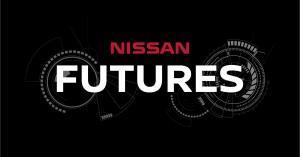
That's not all Nissan is doing. They will be the first major contributor to the vehicle-to-grid system, kicking off in the United Kingdom. Gareth Dunsmore, Electric Vehicles Director for Nissan Europe at the announcement event said: "Nissan has announced today something that is going to help revolutionise the car industry but the energy industry as well. We've launched the vehicle-to-grid (V2G) system with our partner ENEL. That will allow us to put in place a system to take energy out of your car and put it back into your home and put it back into the grid as well." He also says that customers will receive money of up to £600 a year in subsidies from their power provider. "The Nissan Leaf has energy to deliver up to two days of full energy to a house. If you put in everyone in the UK driving an electric car, essentially we could start turning off an entire coal-burning fuel station."
It has been said that the V2G initiative of which Nissan will be the first in the UK to contribute to, could save the country £2.4 billion in electricity costs by 2030. They have named these right-here-right-now energy endeavours the 'Nissan Futures' series.
Paul Willcox, Chairman of Nissan Europe said: "The creation of the 'Nissan Futures' series was born out of Nissan's deep desire to create a safer and more sustainable future for everyone. It's no longer enough for automakers to work in a silo. The challenges of tomorrow require solutions that transcend single industries or companies. That's why we're partnering with like-minded businesses from other sectors to deliver new solutions that support a more sustainable future." He also confidently said that in the next 10 years, the world will see more change in the industry than the past 100. "We are entering the decade of disruption and it's an opportunity for Nissan and the world around us to behave and act differently."
- Details
- Written by: Quintus Potgieter
- Category: Industry
Now that the United States is a liquefied natural gas exporter, they no longer need to import as much gas. The U.S. joins immediate neighbor, Canada, in exporting a good amount of gas, so much so, that the two countries could be influencing the price of gas very soon.
The Canadian National Energy Board have estimated that natural gas exports will shrink in numbers over the next 30 years due to the exports that the U.S. is now making.
Net imports of natural gas from Canada have been falling for years. Rising shale gas production in the United States, especially in the Northeast, is key among several factors affecting this trend.
- EIA Independent Statistics & Analysis for U.S. Energy Information Administration

The United States has indicated that they would be building 15 LNG plants across the country that would be solidifying them as a huge player in the game for LNG exports and presiding over what the price should be.
Elsewhere, Chile will be sending liquefied natural gas Argentina's way this week. Trade relations between the two countries have recently "warmed", according to Reuters. Argentina and Chile haven't exchanged gas in 16 years since exports were cut off in 2000. An industry insider said that Chile could be exporting up to 1.5 billion cubic meters of gas at $6.90 per million British thermal units.
Further afield, the liquefied natural gas industry is ignoring the traditional Asian markets that have supplied LNG to them before and are now looking for new, more expanding LNG markets, according to The Wall Street Journal. An employee involved with the International Group of Liquefied Natural Gas Importers, Vincent Demoury spoke to WSJ. He says that LNG exports have jumped up by 2.5% in 2015. Due to Asia's declining interest in LNG, Demoury says Egypt, Jordan and Pakistan have grabbed hold of 72% of the market share that Asia is leaving behind.
Source: BOEREPORT
- Details
- Written by: Quintus Potgieter
- Category: Developments
Google has released a preview of what they have been busy with in the world of virtual reality. The video shows two artists using a virtual landscape as their canvas and create with the brush that equips them with the tools to create artworks.
On the website TiltBrush, there are more detailed views of what the software actually looks like the inside of the VR goggles. There are dynamic brushes that can paint a plethora of weird and wonderful looking things in the virtual world. Saving of snapshots looks fairly simple so that you can show a 2D representation of what you have been painting but can always launch back into the 3D world of your paintings. You can literally walk around your painting.
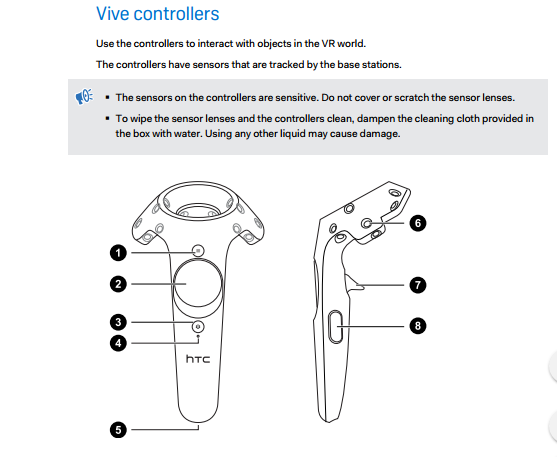
The TiltBrush is already conditioned to work with the HTC Vive and its controllers. You can read the set-up guide of how to use the HTC Vive to utilize Google TiltBrush with this handy pdf.
Another prerequisite is that Steam is required, so it seems that is the official app store they are launching the app to right now. The app is an impressive look into how software engineers will factor into the future of developing apps for virtual reality purposes.
- Details
- Written by: Quintus Potgieter
- Category: Education
Robots may be working amongst you in your office very soon. Maybe that's why you have time to read this article right now, because some automated process is already happening, doing some aspects of your job for you. Physical robots that assist with everyday tasks will also see the light of day. It's not a matter of if, it's a matter of when. The one thing that these robots currently lack is hand dexterity. They cannot grip well and it is hard for them to utilize their hands like a normal human could. Some biomedical robots used for surgery can reach into the human body with an unparalleled dexterity, however, robots with actual hands modeled after human hands are a bit clunkier.
Therefore, a team of computer science and engineering researchers at the University of Washington went to work to attempt to build a robot hand that has dexterity and which can store and learn from the mistakes it makes if it does happen to drop something.
Talking to Design Engineering, Vikash Kumar, a UW doctoral student in computer science and engineering said: "Hand manipulation is one of the hardest problems that roboticists have to solve. A lot of robots today have pretty capable arms but the hand is as simple as a suction cup or maybe a claw or a gripper."
The lab in charge of studying the human hand and how to design it into a robotic hand model is the University of Washington Movement Control Laboratory. The engineers developed several algorithms that enabled the computer to send complex hand movements to the hand itself. The results are staggering, as shown in the video below.
The team then uses sensors and motion captures so that they can extract data from their research and learn from it in their future endeavours in attempting to improve the dexterity of robot hands modeled after human hands. The robot hand has five fingers and looks to be able to understand how humans grip onto objects.
"Usually, people look at a motion and try to determine what exactly needs to happen -- the pinky needs to move that way, so we'll put some rules in and try it and if something doesn't work, oh the middle finger moved too much and the pen titled, so we'll try another rule," says lead author and lab director Emo Todorov. "It's almost like making an animated film -- it looks real but there was an army of animators tweaking it. What we are using is a universal approach that enables the robot to learn from its own movements and requires no tweaking from us."
Kumar explains how the robot learns from its actions to ensure that it grips objects in the correct way. He says: "It's like sitting through lessons, going home and doing your homework to understand things better and then coming back to school a little more intelligent the next day." The computer uses the motion capture cameras and the algorithms and refines the process based on what the algorithms command it not to do.
- Details
- Written by: Quintus Potgieter
- Category: Industry
Hannover Messe 2016 is the biggest conference where industry heads come together to chat about where the world is going in the context of the world renowned fourth revolution, known as Industrie 4.0. Now that the conference is over, the immediate outlines of what the world should be expecting can now be summarized and contemplated. This year both Barack Obama and Angela Merkel attended the conference.
Obama spoke about the fully 3D printed electric car that the United States was showing off at the conference, joking that he would give it a test drive. He also pitched the United States as a world-class country where the companies attending should consider "setting up shop" in. "It's even easier for companies like yours to come and build in America," the President said. He underlined the fact that the United States and the European Union already have the largest trade and investment relationship in the world. Obama pointed out the numbers that this partnership has led to:
- 3 billion dollars of goods and services every single day
- Investment of $4 trillion in each other's economies
- 13 million jobs
Obama also ended his speech off by saying the TTIP (Transatlantic Trade and Investment Partnership) policies that they are infusing into global law would assist a free and open internet. This would help the world of the Internet of Things, industrial automation and more.
Professor Thomas Bauernhansl, the Head of Fraunhofer Institute for Manufacturing Engineering and Automation told SAP TV: "What we see at the moment is that we try to connect all resources in production and that will offer us a completely new world for optimisation of the whole manufacturing processes."
Siemens was particularly instrumental in the topic of Industrie 4.0, who had one of the biggest stands at the conference this year.
Current CEO of Microsoft, Satya Nadella, also had a keynote at the show and gave his impressions on what the future of Industrie 4.0 will be. He said: "The very thing that you produce, the very thing that you manufacture, for the first time, is connected with all of the web of activity around it. It's not just the connection with everything, it is the ability to reason about that activity, that data that's being generated continuously."
A plethora of other companies showed off their robotics solutions for the impending revolution of automated factories that are connected to the internet. The fact that Merkel and Obama both attended the conference shows that Hannover Messe is now the most important showcase of industrial automation in the world today and will continue to grow into the conference that leads the conversation in what is next in that industry.
- Details
- Written by: Quintus Potgieter
- Category: Developments
Good news out of MIT this week. They are actively trying to get rid of our wrinkled skin.
Daniel Anderson, associate professor at MIT said: "The goal was to really create something that was totally invisible, breathable, could coat the skin, protect it, perhaps deliver drugs to it and also perhaps even make it look better."
 Robert Langer, a chemical engineer, and professor at MIT, involved with the project, said: "What we've been able to do is create a cream, basically, that you could put on the skin and then once it's on the skin it can actually form, essentially, a second skin. And it's transparent, it's essentially invisible, it's not messy at all and has good mechanical strength."
Robert Langer, a chemical engineer, and professor at MIT, involved with the project, said: "What we've been able to do is create a cream, basically, that you could put on the skin and then once it's on the skin it can actually form, essentially, a second skin. And it's transparent, it's essentially invisible, it's not messy at all and has good mechanical strength."
Langer says the technology works in two stages: There is an invisible cream that a test subject can apply to their skin involving a polymer that binds the cream to the skin. The second step is applying a catalyst that causes a reaction on the skin. "You could use it in various different areas. One set of things might be in cosmetics where you use it to tighten skin on different parts of the body, another could be for therapeutics where you use it as a whole new plastic ointment that could be used to deliver drugs to the skin to treat different skin diseases," Langer said.

The second skin research has been a ten-year project that was conducted by scientists at MIT, Massachusetts General Hospital, Living Proof and Olivo Labs.
You can purchase and read the research conducted that has been published in the Nature journal.
- Details
- Written by: Quintus Potgieter
- Category: Industry
Electric vehicles. A word that is forever in our collective vocabulary in the world because of the need to cut down fossil fuels in the world today. We've reported on Tesla's recent intentions to produce half a million of their Model 3s by the end of 2018, Toyota investigating what could be powering vehicles in the future and almost every automaker out there trying to move their operations to cleaner processes after being named and shamed in emission scandals.
Cars are being powered by the kind of lithium-ion technology you'd find in energy storage units that are now making their way into houses. However, carmakers are reaching the conclusion that EV (Electric vehicle) batteries can be reused AFTER they've been utilized inside a car. There is a point that EVs come to when the battery no longer functions as it should, under guidelines that would render an EV operational. However, it is said that even after it is has served its purpose, it still has 70% of its energy storage that can still be utilized. This is allegedly surprising the industry due to recently thinking that the batteries wouldn't have much use after used in vehicles.
Navigant Research recently observed that a 2012 Chevrolet Volt had driven up to 300,000 miles without any "battery degradation" issues.
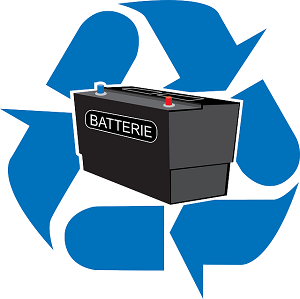 The idea is that once the battery has been used in the EV and decommissioned for use in a car, it can be added to a solar PV system and power a house. Essentially, making second-hand car batteries reusable and expanding a growing trend of grid peak time shaving.
The idea is that once the battery has been used in the EV and decommissioned for use in a car, it can be added to a solar PV system and power a house. Essentially, making second-hand car batteries reusable and expanding a growing trend of grid peak time shaving.
The batteries inside electric vehicles have also been suggested as a possible energy source for the grid whilst they are parked in an area, which would assist utilities at alleviating some of the strain on the grid. Now with the reusability factor of these batteries, the possibilities of how many hours kilowatt-hours could be generated is staggering.
Pablo Valencia, GM's senior manager for Battery Life Cycle Management said: "Even after the battery has reached the end of its useful life in a Chevrolet Volt, up to 80 percent of its storage capacity remains.
The technology will no doubt grow and grow as more electric vehicles are sold and the battery technology is further developed to see how EVs batteries could be repurposed after the use in cars. This is not new information, the feasibility of reuse has been spoken about since 2014. In ScienceDirect in a journal entitled Environmental feasibility of re-use of electric vehicle batteries the researchers wrote: "The magnitude of CO2 mitigation associated with battery re-use is similar to that of switching from using a conventional vehicle to an electric vehicle, meaning the greenhouse gas benefits of vehicle electrification could be doubled by extending the life of EV batteries, and better using off-peak low-cost clean electricity."
- Details
- Written by: Quintus Potgieter
- Category: Education
Where in the world are the engineering mentors? Experts are saying that engineering mentorship is something that could lead to more competent engineering workforce in every industry. Not only is mentorship being encouraged at the college level but also at the working level. It is seemingly never too late to teach an old dog new tricks.
 An impressive feat of instilling an attitude of mentorship occurs at Penn State University. At the Penn State Mechanical Engineering Society (PSMES) the alumni of the society have been forming mentorship programs for the last eight years. The Department of Mechanical and Nuclear Engineering oversees this project and can see 39 alumni mentors to 54 students.
An impressive feat of instilling an attitude of mentorship occurs at Penn State University. At the Penn State Mechanical Engineering Society (PSMES) the alumni of the society have been forming mentorship programs for the last eight years. The Department of Mechanical and Nuclear Engineering oversees this project and can see 39 alumni mentors to 54 students.
Brandon Angle, a mechanical engineering junior in the PSMES program told the Penn State website: "My mentor and I often communicate right before a big event and he'll give me the confidence I need. It helps to have the guidance from someone who's been there and who went through all the experiences that I'm going to go through and just knowing that if I take his advice it's probably going to lead me somewhere where I want to be."
An alumnus involved with the project, Robert Swope, who has his qualification in mechanical engineering, said: "Almost all of the students I've mentored have not really focused on what they want to do. They have a vague idea of their goals, but they can't verbalize what their career would be."
Mentoring, of course, is not limited to the college set-up but can also be practiced within a company. The Dean of Engineering at the Engineering Institue of Technology, Steve Mackay, talks of 'mentoring vigorously'. He says the process can be done by: "Taking your young engineers, the new guys, the new chums on the block who have joined the company, and give them some support. In the old days, we had lovely two, three three-year training programs for engineers, of course, most of those are gone. So, it's up to us."
"Helping a poor young graduate who's probably come from a very high theoretical background, done some exotic mathematics at a university for three or four years and finds the workplace completely different. So, the trick is, to come along and give them a helping hand and get them to work productively as engineers as soon as possible," Mackay said, in the tenth episode of his YouTube series, the Engineering News Network. He also gives a checklist of mentoring guidelines that can be handed down to a young engineer so that they can learn the ropes:
- Give them some worthwhile projects to do
- Give them a vision
- Give them ongoing support
- Help them with troubleshooting
- Give them some basic skills: project management, communications skills
- Try and get them to do a lot of hands hands-on projects
Elsewhere in the world, Bosch is setting up 75 "vocational training opportunities" where students will interact with professionals, mentors and higher-ups in subjects like mechatronics and industrial mechanics. The new 75 positions exclusive to Italy and Spain join the handful of other projects they run in Germany. The company is certain their mentoring and setting up of apprenticeships will deal with societal issues like youth unemployment and build a good wave of competent engineers in countries that would be improved by the assistance of engineers.
- Details
- Written by: Steve Mackay
- Category: Blog - Steve Mackay
We have all sat through yet another interminable boring PowerPoint presentation often riddled with poor use of graphics. As engineering professionals we tend to stick to the technical side and most of us avoid presentations like the plague. However here are some really great tips I have picked up (or stolen?) on how to use graphics (or visuals) in your next engineering presentation– well, with some panache.
Dear Colleagues
We have all sat through yet another interminable boring PowerPoint presentation often riddled with poor use of graphics. As engineering professionals we tend to stick to the technical side and most of us avoid presentations like the plague. However here are some really great tips I have picked up (or stolen?) on how to use graphics (or visuals) in your next engineering presentation– well, with some panache.
There is no doubt that graphics are vital in a good presentation and can gain a lot of attention from technical personnel who immediately sit up when a piping diagram or a pump or circuit schematic appears on a slide. But I get quite despondent when I see graphics used wastefully and poorly. And to add insult to injury, probably one of the killers these days is the use of enormous deluges of videos (which often are poorly explained and have very little relation to the actual presentation). Another trick is to make extensive use of sound and animated graphics. Which while initially entertaining end up confusing (and ultimately boring) everyone.
There is (unfortunately!) no replacement as yet (by machine or software) for a well researched, rehearsed and dynamic presentation by you. But there are no points about graphics which can assist you in your next presentation.
The keys to use of good graphics are:
- Use them sparingly
- Make them big so that they can be clearly seen
- Make them simple so that they can be understood (even by an orang utan!)
- Avoid garish colors that can’t be seen at the back of the room
- Make them memorable, so that people will remember them long after your presentation has been concluded.
- Engineering professionals tend to prefer useful schematics rather than cute pictures of industrial plant and equipment
So why use graphics in your presentations?
- You simply can’t present slide after slide of text – too boring – so they can be a useful divider of text and refresher
- Explain difficult concepts where text is not up to the task
- Graphics are great for getting across symbolic points you want to be remembered
- They provide a useful prompt or prop for you to talk around when discussing some concept
- If used appropriately, they show your audience that you have gone to some trouble to create a really professional presentation to benefit them (rather than a bunch of text-ridden slides)
Cut out the clutter (and noise)
Many graphics have an enormous amount of clutter in them. One needs to apply the so called “three second rule”. If your audience can’t read and understand the graphic in this time; you need to simplify it further. Otherwise they are distracted from what you are telling them as they try and unravel the mysteries of your graphic.
Ways of reducing clutter include:
- Remove unnecessary detail such as grids, numbers and other irrelevant details
- Focus only on including that you are discussing (this may mean eliminating the remainder of the graphic).
- Get rid of any numerical details and use a bar or line graph to get the point across
- Don’t use legends with graphs – label directly on the lines in the graph to minimize your audience flipping back and forth to the legend.
Give your bulleted sequences the bullet
An audience can be exhausted by the endless bulleted lists on slide after slide of PowerPoint. So be innovative here and use a graphic to replace the bullets. For example, a star with the individual bulleted items at each point of the star often looks far more appealing than plain text.
Symbols and more symbols
A great list of symbols as a replacement for using text to make your message (of clichés) more memorable could include a graphic of:
- An electrical plug and socket for “plugged into a concept or thought”
- An engineer swinging a bat for “taking a swing at corruption/poor practices…”
- A rocket with the concept written on it for “taking off like a rocket”
- A blindfolded person about to step down a manhole with no cover for “blind to danger or safety issues”
- Kids building blocks for “the basic building blocks in creating some new concept”
And at the end of the day; ensure that an incredible graphic doesn’t take your audience away from you and distract them totally from your message.
Thanks to Peter and Cheryl Reimold for some good ideas in writing this piece.
Always remember Alfred Montapert’s comment about the end game of visualization – you still need to do something : “To accomplish great things we must first dream, then visualize, then plan... believe... act”!
Yours in engineering learning
Steve
Mackay’s Musings – 10th May’16 #599
780, 293 readers – www.eit.edu.au/cms/news/blog-steve-mackay
- Details
- Written by: Quintus Potgieter
- Category: Developments
The next innovations and solutions to the United Kingdom and perhaps even the world's problems could be coming out of Cambridge University thanks to one man, Sir James Dyson. He has provided funds that will see the opening of the Dyson Centre for Engineering Design at Cambridge University. The Dyson company just recently released their brand new design for the re-engineered hair dryer, that might be taking the world by storm quite soon. Now with this announcement, the new engineering center, Dyson might be releasing all kinds of weird and wonderful engineered products.
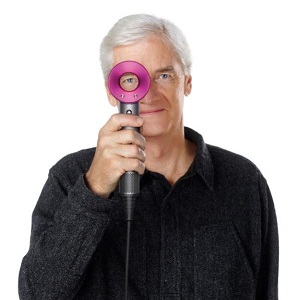
"It's economic suicide that we're not creating more engineers. They create the technologies that Britain can export, generating wealth for the nation. But we're facing a chronic shortage of them," said Dyson. The Royal Academy of Engineering - in 2015 already - spoke of a shortage of engineers in the UK, estimating that they would be short on engineers if they didn't produce more than a million in five years. This year, however, Britain faces a possible exit from the European Union, which experts warn, would set them back even further in engineering fields.
However, what is encouraging is that engineers who have made it in the industry - in Britain specifically - are now looking back and creating opportunities for engineers to continue creating. Dyson spoke to the Telegraph, saying: "Britain has a wonderful tradition of inventing technologies and products. Rutherford Appleton Labs has more Nobel Prizes per square inch than anywhere else in the world. But I wonder how long that will go on. Science and engineering are no longer subjects that young people here are interested in."
The center includes 3D printers, laser cutters, machine tooling areas and more, according to the Telegraph. The center allegedly cost £2.65 million for Dyson who says that the new center will achieve new breakthroughs and will change the way we live today. On top of that, the Dyson Foundation has put £60 million into encouraging younger people to embrace STEM subjects to lead to more engineers in the world.
Dyson also felt proud in the fact that his center will see a handful of women engineers. He said, "At the Dyson School of Design Engineering, 50 percent of its first intake of 44 students is female. That's a phenomenally high percentage and I'm thrilled. One of the tragedies of engineering is that so few are women."
- Details
- Written by: Quintus Potgieter
- Category: Industry
Network security engineers, we need your help. Kaspersky Lab has released a report named the IT Threat Evolution in Q1 2016 and names ransomware as the main threat to cybersecurity in the year 2016. According to their report, there was 459,970 known attempted malware attacks in the beginning of the year. Crypto ransomware attacks stood at 372,602 individual computers that had tried to illicit money from unsuspecting victims.
2016 has only just got underway, but the first three months have already seen the same amount of cybersecurity events that just a few years ago would have seemed normal for a whole year. The main underlying trends remained the same, while there was signficant growth in trends related to traditional cybercrime, especially mobile threats and global ransomware epidemics.
- excerpt from IT Threat Evolution in Q1 2016

The more worrying realization companies should come to is that if the future of industrial production is the Industrial Internet of Things - where their systems will be vulnerable to ransomware or cyber attacks - measures need to be taken to protect themselves. The names to watch out for, according to Kaspersky are:
- Teslacrypt
- CTB-Locker
- Cryptowall/Cryptodef
- Cryakl
- Scatter & Rakhni
Those are the most notorious crypto-families operating right now, infecting computers all over the world and causing some companies to fork out amounts of money to unlock all of their data files.
Kaspersky says there have been 30 percent more ransomware attacks than last year and only in the first three months of the year. Security is becoming the name of the game and will be in the future boom of the Internet of Things revolution.
ZDNet spoke to Aleks Gostev, chief security expert in Kaspersky's global research and analysis team. He says: "Once the ransomware gets into the users' system, there is almost no chance of getting rid of it without losing personal data. The demand to pay the ransom in bitcoins makes the payment process anonymous and almost untraceable which is very attractive for fraudsters. Another threatening trend is the ransomware-as-a-service (RaaS) business model where cybercriminals pay a fee for the propagation of malware or promise a percentage of the ransom paid by an infected user."

Another company keeping a close eye on cybersecurity is Cisco. They have released a document named The Cisco Annual Security Report 2016. They have put the number of cybercrime business per year at $2.1 trillion.
Computer Weekly has published a list of precautions a business/individual/corporation can take to avoid ransomware:
- Backup and be ready
- Keep a layered approach
- Keep up to date
- Check your privileges
- Prepare to deal with criminals
- Details
- Written by: Quintus Potgieter
- Category: Developments
In an unsurprising move, Total, the French oil company, has decided to make a hefty bid to take over a battery maker named Saft Groupe SA. With the assistance of the French Financial Markets Authority, the two companies announced on Monday, that the battery maker would be bought for $1.082 billion. The acquiring of the company happens amidst a brand new branch recently launched by Total that will encourage cleaner practices of energy production.
Total has offered to pay $41.62 per share, which equals the amount of money they are being bought out for. Saft is also a French firm that specializes
 Total's Chief Executive, Patrick Pouyanné, said: "The acquisition of Saft is part of Total's ambition to accelerate its development in the field of renewable energy and electricity." Saft, according to their website, claims to have made $863 million in 2015, making them the world leader in advanced technology batteries. "The combination of Saft and Total will enable Saft to become the Group's spearhead in electricity storage.It will notably allow us to complement our portfolio with electricity storage solutions, a key component of the future growth of renewable energy."
Total's Chief Executive, Patrick Pouyanné, said: "The acquisition of Saft is part of Total's ambition to accelerate its development in the field of renewable energy and electricity." Saft, according to their website, claims to have made $863 million in 2015, making them the world leader in advanced technology batteries. "The combination of Saft and Total will enable Saft to become the Group's spearhead in electricity storage.It will notably allow us to complement our portfolio with electricity storage solutions, a key component of the future growth of renewable energy."
Yann Duchesne, chairman of Saft's Supervisory Board said in their statement: "We are delighted with this rapprochement, which was unanimously approved by the Supervisory Board thanks to its strong industrial rationale and its financial interest for our shareholders.
Elsewhere
Amidst Tesla officially releasing their Powerwall to U.S. households, a rival has entered the game. An Australian company has released their battery storage unit called the Enphase. The orders are now open and the company employs 1,000 installers to assist consumers in getting the units up and running in their households.

Nathan Dunn, managing director of Enphase Asia-Pacific told Gizmodo: "We believe the Enphase Home Energy Solution represents the most compelling and technologically advanced residential energy solution in the world today. In fact, it is the only complete energy system that we've seen to date and we expect the initial demand to be driven by installers looking to retrofit existing residential solar PV systems. Enphase expects the next wave of demand to be driven by new solar PV systems owners enticed by the elegance and simplicity of our solution."
The company is selling to Australia and New Zealand right now, however, they are focusing on the worldwide market just like Tesla has been doing. The first shipments are estimated to be happening in August and if you would like to contact an installer in your area, you can apply on their website: HERE. The interesting part of their product is that it can be added to pre-existing solar PV systems where some companies require their own PV systems to be used. It could be a draw card for some consumers who have already tried to remove themselves from the grid.
- Details
- Written by: Quintus Potgieter
- Category: Industry
What could save the oil industry's plummeting price crisis? Perhaps wind-powered water injection could save the oil and gas industry. Allegedly, the water injection will assist with oil recovery in "offshore oil fields." The project to enforce this new system is called WIN WIN which directly translates into WINd-powered Water INjection. How it would work is to build floating wind turbines which will supply power to water injection technology that would include pumps and "basic water injection" according to DNV GL, who were the initiators of the project.
Gas and oil industry heads signed their companies up for the project of building floating turbines to test out the feasibility of the project for the future of making oil and gas cleaner and more efficient. The companies that took part were: ExxonMobil, ENI Norge, Nexen Petroleum UK Ltd., Statoil, VNG Norge, PG Flow Solutions and ORE Catapult.
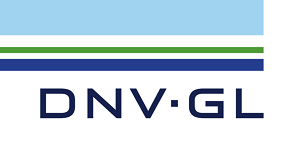 Remi Eriksen, Group President, and CEO of DNV GL, said: "The WIN WIN project showcases that the oil and gas industry can become a creative force in solving the world's energy trilemma by driving the development of reliable, clean and affordable technologies. This is a win for both the oil and gas and for the wind power industries."
Remi Eriksen, Group President, and CEO of DNV GL, said: "The WIN WIN project showcases that the oil and gas industry can become a creative force in solving the world's energy trilemma by driving the development of reliable, clean and affordable technologies. This is a win for both the oil and gas and for the wind power industries."
The company says that the wind turbines handling the water injection in a stand-alone system could completely change up the game and get more and more companies changing their ways and producing with more cleanliness. It would improve environmental performance and reduce costs, whilst avoiding emissions, says DNV GL. The system is also fully automated and powered by lithium-ion battery banks. The wind turbine can also be transported to different wells if needs be.
"Recent developments in floating wind turbines will now facilitate a new era where renewable energy is integrated with oil and gas operations. The first step in that journey is the WIN WIN concept," said DNV GL in a promotional video.
DNV GL has spent time developing off-shore wind turbines, and is now assisting the oil and gas industry with these turbines that utilize a principle that they have coined called 'In-Float'. It is cost effective as well, being built by automated factories, transported to quays and then towed to the site and then used to generate electricity and now more recently, used to inject water.
- Details
- Written by: Quintus Potgieter
- Category: Education
Career Junction is a website in South Africa that has released their 2016 Salary Review for engineers. The research was conducted between October 2015 and February 2016 to investigate how engineering salaries start out at beginner positions, and then how the salary changes in a senior position.
Engineering
| Job | Strarting - Skilled | Top - Senior | Percentage increase |
| Structural engineering | $2,328.80 | $4,682.41 | 101.07% |
| Civil engineering | $2,065.79 | $3,656.51 | 77.01% |
| Electronic engineering | $1,936.58 | $3,262.89 | 68.64% |
| Project engineering | $1,974.01 | $3,133.62 | 58.74% |
| Mechanical engineering | $2,607.04 | $4,116.20 | 57.89% |
| Chemical engineering | $1,836.12 | $2,714.25 | 47.83% |
| Electrical engineering | $2,429.89 | $3,563.25 | 46.62% |
| Industrial engineering | $2,351.24 | $3,174.21 | 35.18% |
Building Construction
| Job | Starting - Skilled | Top - Senior | Percentage increase |
| Structural engineering | $2,330.44 | $4,685.78 | 101.07% |
| Architectural technologist | $1,071.59 | $2,042.84 | 90.86% |
| Civil engineering | $2,066.37 | $3654.43 | 77.01% |
| Artisan | $1,220.95 | $1992.63 | 63.20% |
| Quantity surveying | $1,481.22 | $2,375.55 | 60.69% |
| Electricians | $1292.28 | $2,058.25 | 58.97% |
| Quality control & assurance | $1347.72 | $2105.94 | 56.26% |
| Draughtsman | $1364.21 | $2060.40 | 51.03% |
These numbers are limited to South Africa, however, they could give engineers around the world a good idea what salaries look like elsewhere in the world and could apply to the industries they are currently working in. It should give an idea of what to expect based on what engineers are making in South Africa. Or the situation could be improved elsewhere in the world, meaning engineers would be happy where they are right now and not considering travelling overseas to find better opportunities.
- Details
- Written by: Quintus Potgieter
- Category: Education
Are you an engineer actively seeking to fill a position at a company that has its priorities straight when it comes to the environment? A global engineering firm named Arcadis might be the one for you. Their particular focus is on water, infrastructure and construction projects. And they're hiring.
 John Jastrem, Arcadis' North American CEO, told CNBC: "We're looking to hire approximately 400 engineers and scientists this year." He also confirmed that payroll would increase by 10 to 15% for the next five years. The company currently works on cleanup of sites in the mining sector to ensure the environment is protected after the first phase of engineering is completed. They also investigate the impact an engineering project will have on the environment, especially in oil projects.
John Jastrem, Arcadis' North American CEO, told CNBC: "We're looking to hire approximately 400 engineers and scientists this year." He also confirmed that payroll would increase by 10 to 15% for the next five years. The company currently works on cleanup of sites in the mining sector to ensure the environment is protected after the first phase of engineering is completed. They also investigate the impact an engineering project will have on the environment, especially in oil projects.
The company currently has 27,000 employees working in over 70 countries and improve the quality of life. They concern themselves with environmental and social impact assessment business.
A recent hire by the company, Allesandro Casartelli, told Arcadis' official website: "The impact of business on the environment and the communities it serves has never been more important. Having a better understanding of these issues will not only help make corporates make better decisions but will also improve the quality of life for those who these businesses touch. I am very much looking forward to getting started and helping to develop this key part of the Arcadis business on behalf of our clients."
The company also reportedly brings in high school students who are currently studying STEM subjects to shadow the company for a day and see how their future-focused engineering firm works. On top of that, they also recruit students who have just graduated from college and put them straight into a STEM career.
"We compete with Silicon Valley, we compete with the pharmaceutical industry," said Jastrem. "We really look for people who are on a lifetime mission to make the world a better place to live and have that desire to learn and innovate and to make some changes.
 Regardless, if you work for Arcadis or whether you find another engineering company that actively cares for the environment, it must be a good feeling to be involved somewhere that doesn't include harming the environment. The importance of being happy in a job and knowing that it is contributing to the greater good is valuable.
Regardless, if you work for Arcadis or whether you find another engineering company that actively cares for the environment, it must be a good feeling to be involved somewhere that doesn't include harming the environment. The importance of being happy in a job and knowing that it is contributing to the greater good is valuable.
The Dean of Engineering at the Engineering Institute of Technology, Steve Mackay, speaks about the rule of two third for happiness, in his 33rd episode of the Engineering News Network. He says: "If you are happy in your job, that's one, if you are happy where you live, that's item number two, and item number three is, if you're happy with who you're with...if you can achieve two of those three, then you are happy and should be very grateful."
Mackay puts this in the context of being in an engineering position. He also says that health is an important issue for engineers as well, an engineer should be healthy on top of being happy with where they are at in the engineering industry.
There are engineering opportunities out there but finding the right one that enables a balanced life and being comfortable in your workplace environment, is the tough part. Mackay concludes his cautionary words on happiness with a quote. He said: "One of the symptoms of an approaching nervous breakdown is the belief that one's work is terribly important."
- Details
- Written by: Quintus Potgieter
- Category: Industry
The global construction company Caterpillar has announced its very "integrated micro-grid solution" which reportedly utilizes solar photovoltaic panels and units to store the energy in. It is going by the name Cat Microgrid Technology and will come in 1kW to 100MW solutions. PV-Tech confirms they are including thin-film solar panels, Caterpillar generators and energy storage technologies which now include lithium-ion batteries.
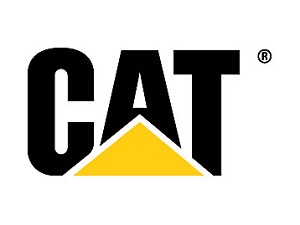 Caterpillar said that their microgrid technology would be best suited for telecom towers, rural electrification, mining and industrial facilities where the units could be combined and connected to supply energy in an energy network setup. It has taken Caterpillar only one year since the announcement of their collaboration with photovoltaic developer First Solar. They called it a 'strategic alliance' and are looking at supplying to areas such as the Asia-Pacific regions, Africa, and Latin America, then gradually adding other customers not long after.
Caterpillar said that their microgrid technology would be best suited for telecom towers, rural electrification, mining and industrial facilities where the units could be combined and connected to supply energy in an energy network setup. It has taken Caterpillar only one year since the announcement of their collaboration with photovoltaic developer First Solar. They called it a 'strategic alliance' and are looking at supplying to areas such as the Asia-Pacific regions, Africa, and Latin America, then gradually adding other customers not long after.
The announcement from Caterpillar comes after Lockheed Martin - known for their aerospace engineering endeavours - joined the game with corporate and industrial sized battery units to supply energy to businesses in peak hours, alleviating stress on the grid.
Rick Rathe, the general manager of new ventures for Caterpillar's Electric Power Business told Power Mag: "With the declining cost of renewable energy sources and rapid advances in energy storage technology, the time is right to provide an integrated application for remote power. Cat Microgrid technologies deliver an innovative, financially viable way to incorporate sustainable sources of energy into our existing portfolio of traditional power generation offerings."
Visit their website to learn more about their entry into renewable energy technologies: http://www.cat.com/powergeneration. Their aim is to be the leader in offering renewable energy sources to multiple industries including agriculture, commercial businesses, construction, data centers, greenhouses, healthcare, landfills, manufacturing, mining, municipality, power plants, telecom, and utilities. Sounds like the heavy hitters are here to stay.
Australia wants to be the leader
The political party known as The Greens in Australia has said it would be beneficial if they were granted up to $2.9 billion to equip 1.2 million houses with energy storage units which could see the country becoming the leader of renewable energy in the world. The proposition also includes 30,000 businesses that would benefit from the energy storage units. An endeavour that would only cost the government $38 million, says the group.

The Greens energy spokesman, Adam Brandt spoke to the Guardian Australia, saying: "Now is the time to jumpstart the battery industry, encourage the take up of storage and help make Australia a renewable energy leader." The group wants Australia to be fully integrated with energy storage units by up to 90% by 2030.
These plans were thrown into the mix along with the Clean Energy Council's impending safety regulations on the photovoltaic panel installers in Australia, which is starting to equate to the country being the most prepared for the energy storage revolution.
However, it seems the government of Australia has not yet latched on to The Greens plans, however, their fight continues. The Greens say too much money is going towards companies that still produce fossil fuels and that the government should strongly consider giving them the backing and make Australia the most forward thinking nation in terms of energy storage units.
- Details
- Written by: Quintus Potgieter
- Category: Developments
Earlier in the year the Consumer Electronics Show, 2016 took place in Las Vegas, allowing electronics manufacturers to show off the new innovations they had been building up in their factories. An autonomous passenger drone by the name of EHang was teased as the first autonomous aerial vehicle in history. Since then, more and more engineers have been lending their minds to companies to create autonomous passenger vehicles that could potentially take to the sky.
The company behind EHang is upping the ante with its confident claim that they will be able to manufacture 1,000 drones for a company named Lung Biotechnology PBC. The company in question wants to design lungs and other artificial organs which can then be flown to hospitals in need. The drone will be renamed to the Manufactured Organ Transport Helicopter (MOTH) and will be the efficient vehicle that transports the organs.
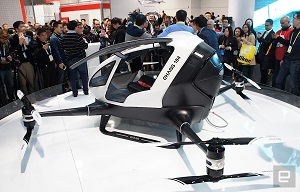
The EHang 184 carries a single person at a speed of 10 MPH to 65 MPH through the air. The company is also able to fly their drones at night, which would be beneficial for hospitals that are in need at odd times of the night or the morning. According to the team of engineers, the drone can be preprogrammed on a course within a 10-mile radius.
The company says: "Currently, organ transplants are limited by the number of brain-dead donors, which results in thousands of death on an organ transplant waiting lists each year."
The plans to launch this initiative might take a while seeing as though artificially designed organs are not yet a reality. Lung Biotechnology rakes in $700 million in yearly sales, according to Engadget. However, the companies are excited by the prospect of being able to transport the artificial organs of the future. The company is conducting research in the pig-to-human xenotransplantation and stem cell technology biomedical engineering industry. Once it is declared safe to use, if at all, the drones and the artificial organs will be flown around the clock and save lives. Or at least that's the intention.
- Details
- Written by: Quintus Potgieter
- Category: Education
Tesla Motors Inc. Vice President of Production, Greg Reichow, and Vice President of Manufacturing, Josh Ensign have both left the company ahead of the announcement from Elon Musk that they would be ensuring 500,000 vehicles would be sold by 2018. This would mark five vice presidents that have exited the company in the space of three months. One of the former VPs was just scooped by Apple Inc. in a move that makes the critics wonder if an electric iVehicle could be making its way to the market by 2017.
 Apple Inc. also lost an employee to another big company this year. Danny Coster, the industrial designer for Apple joined GoPro. Seemingly, engineers are always looking for a company that will offer them the best work environment, the best pay and the most likely, the most open space for innovation. These are engineers who would probably prefer to keep their job hunting efforts on the down low, so that, the companies who currently employ them don't get wind of their desire to resign. This can be a very hard task for some. Imagine an engineer gets found out for wanting to jump ship and gets fired from his job but hasn't secured a job in the company he was thinking of sending his curriculum vitae to. It's a stress-inducing prospect for any person.
Apple Inc. also lost an employee to another big company this year. Danny Coster, the industrial designer for Apple joined GoPro. Seemingly, engineers are always looking for a company that will offer them the best work environment, the best pay and the most likely, the most open space for innovation. These are engineers who would probably prefer to keep their job hunting efforts on the down low, so that, the companies who currently employ them don't get wind of their desire to resign. This can be a very hard task for some. Imagine an engineer gets found out for wanting to jump ship and gets fired from his job but hasn't secured a job in the company he was thinking of sending his curriculum vitae to. It's a stress-inducing prospect for any person.
Steve Mackay, the Dean of Engineering at the Engineering Institute of Technology highlights this problem in the 32nd episode of the Engineering News Network. He highlights certain scenarios that would lead an engineer to search for other means of employment. He says: "You're perhaps an engineer or a technician, you've been in the same company for many years, you think there's a purge coming. The price of whatever you're selling is going through the roof or the competitors are pouring in and you're worried about the future. But you need to be very careful about your job search."
In the video, Mackay gives tips on keeping your job search confidential so your current employer doesn't pick up on the fact that you are wanting to jump ship. We will paraphrase some of them here:
- Network with trusted peers
- Big brother is watching: Companies have access to internet activity, sites you're visiting.
- Phone confidentiality: Make sure there is no one listening in
- Only work with professional executive search firms. Make sure you emphasise that you are a confidential candidate.
- Social networking sites: Employers can see what you are putting online on a public domain
- Exhibitions and conferences: An exhibition stand could give you a lot of information about a potential job
Career Directors also published a list of things to look out for when attempting to secure other employment without the current employer making a snap judgement and firing you for wanting to leave the company:
- Keep your own confidence
- Tell recruiters your search is confidential - Which Mackay highlights as well
- Ask your prospective employer to keep your job search in confidence
- Develop a confidential version of your resume
- Maintain or expand your efforts and work style while you conduct your job search
- Conduct your search from home
- And most interestingly, if your boss confronts you about your job search, own up to it
Source: Career Directors
- Details
- Written by: Quintus Potgieter
- Category: Developments
Graphene since its discovery in 2004 has been an investigated by engineers across the globe. Brazil is attempting to commercialize the material by opening a Graphene and Nanomaterials Research Center which will be called MackGraphe. Graphene is the thinnest compound that weighs in at one atom thick and is the lightest known, strongest compound ever discovered. So the desire to capitalize on the material and build into our everyday lives is of heightened interest to engineers and scientists all around the world. The honeycomb-like texture the material takes on, is also of importance to some engineering designers. Thus, the Mackenzie Presbyterian University in São Paulo wants to open the facility that will concern itself with graphene and see how it can be introduced into the world.
MackGraphe will actively work with nanomaterials, a team of 20 engineers will be lending their minds to the project. According to Chemistry World, the material will have eventual benefits for "electronics, biological engineering, filtration, energy storage" and the development of strong and non-heavy materials.
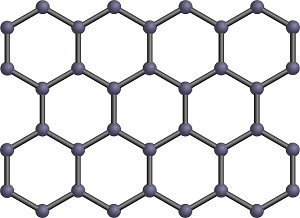 Brazil is late to the party, however, due to the University of Manchester in the UK, who have already invested money into the National Graphene Institute (NGI) that has been open for over a year. An inquiry was opened against the institute criticizing it for the speed at which revelations in the graphene industry are being made. It is alleged that the institute will not be able to take graphene from lab to the market anytime soon, which has alarmed government investors who have pumped £38 million into the research.
Brazil is late to the party, however, due to the University of Manchester in the UK, who have already invested money into the National Graphene Institute (NGI) that has been open for over a year. An inquiry was opened against the institute criticizing it for the speed at which revelations in the graphene industry are being made. It is alleged that the institute will not be able to take graphene from lab to the market anytime soon, which has alarmed government investors who have pumped £38 million into the research.
The University of Manchester replied to the claims that they were spending all their time on research and not so much on development. BGT Materials, a company involved with graphene development also said it was working on something but wouldn't divulge what. Their research and development manager, Liam Britnell, said: "We have definitely tried to keep under wraps what we're doing. There's no advantage to shout from the rooftops." The company was rumored to be working on a lightbulb that utilizes graphene to transfer heat from a light-emitting diode (LED) which would improve its efficiency, according to Nature.
There have also been 25,000 patent applications in graphene development between 2005 to 2014, according to the UK Intellectual Property Office, showing that graphene could soon be making its way into the newest product consumers will be getting their hands on.
- Details
- Written by: Quintus Potgieter
- Category: Developments
Interesting week for electric vehicles and the companies that are producing them. Tesla Motors Inc. has seen the exit of two top executives whilst they confidently stride forward to releasing the Tesla Model 3. Tesla initially said that they would be delivering the car at the end of 2017 and intend to push out 500,000 units a year by the year 2020.
Then Elon Musk (CEO of Tesla and SpaceX) decided to supercharge their initial statement in a conference call saying that they are ready to deliver 100,000 cars by the end of 2017 and will reach the 500,000 mark in 2018. According to Reuters, the company's shares jumped up by 5 percent when the announcement was made.
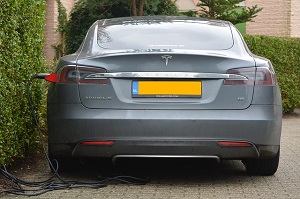 Musk said: "The key thing we need to achieve in the future is to also be the leader in manufacturing. It's the thing we obviously have to solve if we are going to scale and scale profitably." Critics have said that the company will not make the new goal they have set but are interested to see if it's possible. Musk notoriously said if they want to make half a million vehicles this year they would have to deplete the world's lithium-ion sources.
Musk said: "The key thing we need to achieve in the future is to also be the leader in manufacturing. It's the thing we obviously have to solve if we are going to scale and scale profitably." Critics have said that the company will not make the new goal they have set but are interested to see if it's possible. Musk notoriously said if they want to make half a million vehicles this year they would have to deplete the world's lithium-ion sources.
Elsewhere, Toyota is looking into its own alternative to lithium-ion and potentially throwing their weight behind magnesium. The engineer initially working on hydrogen storage at Toyota's Research Institute of North America (TRINA) says that her findings could be applied to a magnesium battery. The company says magnesium batteries could lead to longer lasting electric cars that travel further and go at a faster speed. The company also said that magnesium batteries could replace the batteries in the smartphones of today.
Toyota published its finding in a paper titled 'An Efficient Halogen-Free Electrolyte for Use in Rechargeable Magnesium Batteries '. The company
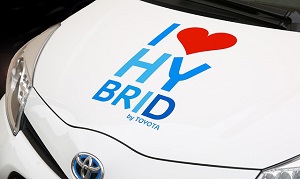
is playing it safe for now and saying that it could be an eventual solution because it has not yet perfected the use of a magnesium solution for powering vehicles. The issue they are having - that they detail in the abstract of their research paper - is the fact that the electrolytes in magnesium batteries are "corrosive toward metallic battery components." It doesn't do great around metals. However, Toyota is hellbent on continuing their research to potentially redefine the power source of electric vehicles in the not so distant future. The company - in a statement - said: "While it's easy to get caught up in the potential of a dramatically improved battery, it could take 20 years of research and development before magnesium batteries reach the consumer market."
The chemical engineer who made the discovery at Toyota, Rana Mohtadi, told media: "We were able to take a material that was only used in hydrogen storage and we made it practical and very competitive for magnesium battery chemistry. It was exciting."
- Details
- Written by: Quintus Potgieter
- Category: Developments
Researchers at the University of Michigan are calling a device they have used to imitate the "flow of medication" around a system similar to the human kidney, the 'kidney on a chip'.The device allows the researchers to determine how kidney cells would be affected by certain medications which could lead to a more accurate dosage of drugs for patients in the future. Overdosing a patient could lead to deaths and this engineered kidney simulation device is on its way to avoiding overdosage.
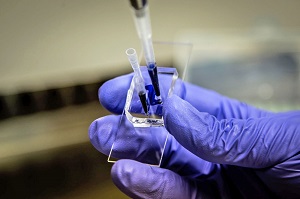
It has been reported that two-thirds of patients in the ICU have damaged kidneys when admitted. The problem is, up to twenty percent of these cases are due to medications that have damaged the kidney. This is because of the sort of medications that are given for kidney damage in ICU units of which some are considered toxic.
Shuichi Takayama, a professor of Biomedical Engineering at the University of Michigan said: "When you administer a drug, its concentration goes up quickly and it's gradually filtered out as it flows through the kidneys. A kidney on a chip enables us to simulate that filtering process, providing a much more accurate way to study how medications behave in the body."
The chip was made with what's called a permeable polyester membrane and a layer of actual kidney cells, sandwiched in between the microfluidic top and bottom parts. The device then simulates the environment of an actual kidney and delivers one large dose instead of one continuous dose of medicine. The idea is that one large dose kills fewer cells instead of one continuous dose that tends to kill more, according to the group's video.
The study was published in the IOP Science Journal under the title Pharmacokinetic profile that reduces nephrotoxicity of gentamicin in a perfused kidney-on-a-chip. In the abstract, the researchers say that the paper aims "to illustrate the potential to fill in such pharmacokinetic gaps between animals and humans using a microfluidic kidney model." This means the research will also be able to apply to animals' kidneys as well. Thus, human and animal lives could be saved as a result of the correct amount of drugs being administered at a time.
- Details
- Written by: Quintus Potgieter
- Category: Industry
At Flat Rock Assembly plant in Michigan in the United States, Ford is testing out their new, portable 'aeroacoustic wind tunnel'. They are going as far as to say that this portable wind tunnel is the first mobile version of its kind and are waiting on a patent for the portable invention to clear. Now, Ford's engineers can test vehicles at the plants they are built in without having to transport the vehicles to facilities with built-in wind tunnels.
The aeroacoustic wind tunnels will deal with the noise generation of the wind that flows past a car when it is travelling at a speed, or staying stationary. The portable wind tunnel is nestled into two 53-foot shipping containers, which can be lifted onto flatbed trucks and transported. The process takes about six hours, but then the tunnels are ready to go.
In a statement, Bill Gulker, Ford's wind noise core supervisor said: "This project was born from a desire to be the best when it comes to controlling and limiting the cabin noise customers are so sensitive to. And our new mobile wind tunnel saves our engineers time and increases productivity."
According to AutoNews, a standard aerodynamics lab costs around $50 million to make, but this new invention would shave almost half off of that cost.
"Now, we're able to detect even the most subtle noises. We can identify an area in need of improvement, have key people gather, communicate quickly and resolve the issue without delay," said Gulker.
The team of engineers can push out 80 MPH to perfectly simulate the speeds of air that whooshes by on the highway. By doing this, they can minimize the amount of sound that makes it into the cabin during a trip in the car.
- Details
- Written by: Quintus Potgieter
- Category: Developments
Markit Economics and the Chartered Institute of Procurement & Supply has confirmed that Britain's construction sector is expanding at a slow rate. It hasn't expanded this slowly in three years the report said. According to IBTimes, it is the 36th month of expansion, however, it is the slowest construction output since 2013.
Britain has recently seen issues in the steel industry and is unsure about its future when the European Exit vote happens in June.
 Markit's senior economist Tim Moore, said: "Stalling new order volumes not only set the scene for further weakness ahead but are already weighing on staff hiring and input buying across the construction sector. Softer growth forecasts for the UK economy, alongside uncertainty ahead of the EU referendum, appear to have provided reasons for clients to delay major spending decisions until the fog has lifted."
Markit's senior economist Tim Moore, said: "Stalling new order volumes not only set the scene for further weakness ahead but are already weighing on staff hiring and input buying across the construction sector. Softer growth forecasts for the UK economy, alongside uncertainty ahead of the EU referendum, appear to have provided reasons for clients to delay major spending decisions until the fog has lifted."
Markit also reported that confidence in the sector is also not high and is also hurting the industry. The unwillingness of companies ordering new projects will not improve the situation, it will only make it worse. The Bank of England warns that the EU referendum is mostly to blame and it would be beneficial for Britain not to exit the European Union to ensure that engineering sectors remain protected.
George Osborne said: "Investments and building are be delayed, and another group of international experts, the OECD confirms British families would be worse off if leave the EU."
Comparatively, the United States' construction industry has grown to an 8 and a half year high. Their industry hit the highest level since October 2007.
- Details
- Written by: Quintus Potgieter
- Category: Developments
The United Arab Emirates is planning to take civil engineering to a whole new level. The engineers of the country plan to build a man-made mountain to produce rainfall. The hope is that with a mountain range effect, they will be able to cloud-seed the area. Cloud-seeding refers to weather modification that can increase the amount of rainfall in an area.
The UAE has already invested US$11 million into cloud-seeding efforts in the past which have allegedly shown results but it seems the country wants to do more.
 The country will be working along with the University Corporation for Atmospheric Research (UCAR) who operate out of the United States of America. The researchers there say they are working through a "detailed modelling study" of potentially building a man-made mountain to attempt to increase rainfall in the UAE, known for its dry conditions.
The country will be working along with the University Corporation for Atmospheric Research (UCAR) who operate out of the United States of America. The researchers there say they are working through a "detailed modelling study" of potentially building a man-made mountain to attempt to increase rainfall in the UAE, known for its dry conditions.
"Building a mountain is not a simple thing. We are still busy finalising assimilation, so we are doing a spread of all kinds of heights, widths and locations [as we simultaneously] look at the local climatology," said Roelof Bruintjies, an expert in weather modification from the National Centre for Atmospheric Research told Arabain Business.
Steve Mackay, the Dean of Engineering at the Engineering Institute of Technology calls endeavours of this kind: engineering with the natural order of things. In his YouTube series, the Engineering News Network, he encourages engineers to use the natural order of things to work more efficiently. He says: " Try and use the environment to make your job easier when doing your engineering design...Try and use the natural order of your environment to do a lot of the work for you." However, the building of a mountain would be engineering a seemingly natural object to work alongside the natural order of things, tweaking how the natural order operates but not in an invasive way. In addition, the engineering of something that could assist a community and improve it is a good thing.
Bruintjies further explained: "What we are looking at is basically evaluating the effects on weather through the type of mountain, how high it should be and how the slopes should be. We will have a report of the first phase this summer as an initial step." The hope is that just like mountain ranges in the actual world, the weather will be modified to the point where more rainfall is produced.
- Details
- Written by: Quintus Potgieter
- Category: Industry
IBM is allowing the public to access its quantum processor from the cloud. Through applying on their website, anyone could get rights to test out the only known quantum computer known to be in operation in the world. NASA, Google, and Microsoft are all reportedly looking into how they could utilize quantum computing and how to use it for the benefit of their companies.

Arvind Krishna, senior vice president and director of IBM Research in a statement: "This moment represents the birth of quantum cloud computing. Quantum computers are very different from today's computers, not only in what they look like and are made of but more importantly in what they can do. Quantum computing is becoming a reality and it will extend computation far beyond what is imaginable with today's computers."
The five-qubit quantum computer can be accessed over the internet which critics are saying would open a new window to the world that would figure out what quantum computing could be used for to improve the world.
TIME magazine recently published a list of theoretical uses for quantum computing:
- Safer airplanes
- Discover distant planets
- Win elections
- Boost GDP
- Detect cancer earlier
- Help automobiles drive themselves
- Reduce weather-related deaths
- Cut back on travel time
- Develop more effective drugs
Quantum computing might be the future of computing, especially for Internet of Things devices that need to be connected to a network and produce data and analytics. Quantum computing would make any data available at the click of a button. Data that would have taken days. months or years to access in the past.
Never before has a quantum computer been opened for widespread use by the public, so IBM's cloud-based operation will be a test drive for how the technology can be applied to the world. It is being named the IBM Quantum Experience and will allow the running of algorithms and will allow the use of individual qubits.
The quantum computer utilizes quantum theory and in turn stores information that way. It is faster than any computing system invented in the world today and can perform thousands of tasks at once.
Jay Gambetta, the manager of Theory of Quantum Computing and Information at IBM, spoke to Computerworld, said: "Since this open to the public, there is no organization or business that will have priority. There are several opportunities for material and drug design, optimisation, and other commercially important applications where quantum computing promises to offer significant value beyond what classical computers can offer."
- Details
- Written by: Quintus Potgieter
- Category: Developments
Researchers at Oregon State University in the United States have discovered a new method of boiling water that utilizes new technology. They have published their findings in the Scientific Reports journal under the title Large-scale Generation of Patterned Bubble Arrays on Printed Bi-functional Boiling Surfaces.
The researchers investigated bubble nucleation control to attempt to enhance boiling heat transfer performance, according to the abstract of their report.
We report a novel bi-functional heterogenous surface structure that is capable of tuning bubble nucleation, growth and departure dynamics.
Heterogenous surfaces with various configurations were fabricated and their bubble dynamics were examined at elevated heat flux, revealing various nucleate boiling phenomena. In particular, aligned and patterned bubbles with a tunable departure frequency and diamater were demonstrated in a boiling experiement for the first time.
The researchers have filed a patent application for the method they have discovered. The researchers say the method includes the boiling of water and the creation of steam.
Chih-hung Chang, a professor of electrical engineering at the OSU College of Engineering said: "One of the key limitations of electronic devices is the heat they generate, and something that helps dissipate that heat will help them operate at faster speeds and prevent failure. The more bubbles you can generate, the more cooling you can achieve."
Engineering the wettability contrast of the surface holds great potential to enhance the heat transfer in both boiling and condensation proccesses.
The bi-functional boiling surfaces were fabricated on large-size stainless steel substrates using fleible and scalable approach in contrast to much more expensive photolithography and etching processes.
The discoveries the team has made will allegedly assist industrial-sized steam boilers achieve their goals more efficiently and will have an effect on electricity production in electric generating facilities, according to Science Daily.
The newly discovered method enables the engineers to induce and control boiling bubble formations. They showed the possibilities of this by forming bubbles in the letters 'USO'.
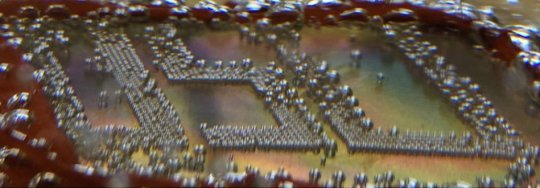
- Details
- Written by: Quintus Potgieter
- Category: Developments
Geospatial engineering is a recent addition to the list of engineering roles you could find yourself in if you have an affinity for circumnavigating the world of civil engineering. These engineers are currently trying to imagine the introduction of European-styled roundabouts for the United States of America. the engineers would work closely with civil engineers, town planners and the like, to plan out how to design roads so that traffic and accidents are significantly lower.
According to The Economist, America only has 4,800 roundabouts in the entire country and says that a quarter of road deaths occur in intersections.
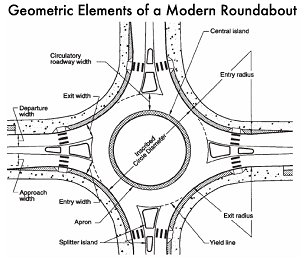
Explaining why there is a lack of roundabouts in the States, Lee Rodegerdts, an international roundabout expert at the Portland transportation engineering and planning group, told CityLab: "My guess is that the possible benefits of roundabouts weren't widely known, and we had a long history of using traffic signals. It took some bold people -- both on the elected-official side and on the transportation professional side -- to get the first ones installed, and they deserve a lot of credit for sticking their necks out there.
Steve Mackay, the Dean of Engineering at the Engineering Insitute of Technology believes American engineers did not align themselves with the KISS (Keep It Simple Stupid) principle. He implies that they did not see the facts and figures to see how beneficial roundabouts would have been for the United States, instead of their complicated, more unsafe, four-way intersections. Engineers at Kansas State University discovered that delays were 65% less at roundabouts.
Mackay, in the YouTube series Engineering News Network, said: "Roundabouts reduce your delays by 90% compared to the four-way intersections. Accidents are down by 80%, this is actually research proven. Considerably simpler. There are far fewer conflict points in a roundabout compared to a four-way intersection."
Mackay also speaks of the angle of collision in a roundabout in comparison to the American alternative. He says, "If you do have an accident in a roundabout, it's at an angle so the actual impact would be lower than in a four-way intersection. From a financial point of view, which is an area which we often neglect as engineers - dare I say - your return on investment for a roundabout is about eight times greater than that of a four-way intersection."
Amsterdam has even added a special ring for cyclists who are given the right of way to make the roundabouts safer for them. This is something missing from some recent adopters of the roundabout who are now trying to build cities with bicycle lanes and roundabouts that maintain a flow of traffic with the right of way rules for cyclists due to bicycle and car-related incidents in the past.
- Details
- Written by: Quintus Potgieter
- Category: Developments
Skycatch is a drone data software company in the United States who's tagline is: Connecting people and machines to the real-time physical world. It is a tagline that indicates what the future of construction could look like. Machines doing what the people would be doing in real-time. The company recently received funding to the tune of $22 million that would see them producing hardware and software for unmanned aerial vehicles that would assist with civil engineering endeavours.
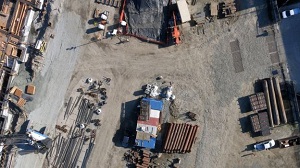
According to BBC News, a Japanese construction company named Komatsu is taking Skycatch's hardware and software further by implementing the technology into automated bulldozers. Reportedly, the drones would deliver a 3D model of a building to a computer and then the information is sent to the unmanned machinery so that it can successfully do its job on a construction site.
The drones look down on a construction site and can produce data about the site for the civil engineers that would be able to estimate how long a job is going to take based on the analytics.
Skycatch's chief executive, Christian Sanz, spoke to BBC, saying: "The more visible data that you have on a site, the more you'll see machines and robots moving things around rather than humans."
Mapping a site has never been easier than with the drones that scan the entire site and turn into a virtual design that is easily accessible to the civil engineers to peruse. "With the former, traditional method, it takes about two weeks, on average, to survey a certain piece of land. Meanwhile, with Skycatch it can be completely down within one day, or even 30 minutes," says Kenishi Nishihara, a project manager with the Smart Construction division.
A website called Wise Guy Reports has compiled a 60-page report that states that the global market research they conducted on the civil construction industry revealed that the global market for construction robots will grow by more than 5% by 2020. The report also said that Japan is the pioneer of the application of robots in the automated construction industry. So it is no surprise that Komatsu is interested in Skycatch.
Alternatively, Technavio also released a reported titled Global Mobile Robotics Market 2016-2020 and estimated that the robotics market would spike by 12% by 2020.
Komatsu is calling their drone-ground-scanning-bulldozer-navigating initiative is being called 'Smart Construction'. Martin Schulz, an economist at Fujitsu Research Institute in Tokyo, spoke to Bloomberg last year, saying: "The labor shortage in the construction industry could reach a crisis level in the next few years."
- Details
- Written by: Quintus Potgieter
- Category: Industry
Self-driving cars and self-flying drones are always in the news, however, have you ever heard of self-driving ships?. The Titanic would have been a different story if somehow the self-driving technology the ship had could have spotted and avoided the iceberg. Oh, the possibilities. Just imagine getting on a cruise ship that has no crew steering it. Fiction becomes fact quite quickly in the engineering world these days.

The Pentagon has revealed the world's largest unmanned surface vessel. A self-navigating, self-driving 40-meter ship that would be able to sail up to 10,000 nautical miles by itself. The ship is the brainchild of the Defence Advanced Research Projects Agency (DARPA) with the contribution of the Navy. The ship is being held at the San Diego coast and will be tested there for the next two years. In that time, the ship will interact with other ships and will also learn how to navigate around ships that are manned with personnel.
DARPA employee Jared B Adams said: "It's not a joy-stick ship." Meaning, the ship is not controlled by a controller like some drones are in the world today, the ship has been designed to drive itself with artificial intelligence like the self-driving cars we see today. However, if the ship does run into troubles it can be overridden by a human driver.
Allegedly, the U.S. has been hard at work trying to ensure that the ship is hacker-proof so that it cannot be programmed to go places that the Navy hasn't cleared it for. It reaches up to 29,9 MPH which is not amazing but it is something. The ship cost $152 million for the first prototype but DARPA confirmed one can be built for $16 million in the future, according to CBC News.
- Details
- Written by: Quintus Potgieter
- Category: Industry
A team of engineers at the University of California, San Diego have taken inspiration from nature for a new model that could be manufactured at a larger scale for usage in multiple engineering industries from civil engineering, but their focus right now is on aerospace engineering. The object is modeled after a sea urchin's mouth and teeth that have been made into a grappling tool. The researchers have published the details of the model in the Journal of Visualized Experiments.

The team modeled the mouth after the description of 'Aristotle's lantern' in Greek philosophy which speaks of a sea urchin's mouth. A sea urchin's mouth has movable spines and pincerlike organs which can scrape algae from rocks. The teeth are housed in a dome formation that works like a claw crane in an arcade.
The mouth has the ability to grip up soil or cut straight through rock, which has led to the researchers say that the vehicle could assist with gathering samples on Mars once the mission kicks off in 2018. The most recent vehicles sent to Mars collects samples through using shovels. Michael Frank, on his way to getting his P.h.D. at the Jacobs School of Engineering at UC San Diego and one of the author's of the paper said: "Our goal was a bio-inspired device that's more precise and efficient at grabbing ground samples from different areas, and won't disturb the surrounding area like a shovel would."
This could be useful in the future of civil engineering if the team could team up with construction vehicles to build a similar system for site construction. The group is led by Joanna McKittrick, a mechanical engineering professor and encourages the group to look at nature for inspiration when designing something.
The engineers tested the claw out by connecting it to a rover-like vehicle and letting it capture soil that was at a similar density of Mars' sand.
In the abstract to their report, the engineers say:
Bioinspired design is an emerging field that takes inspiration from nature to develop high-performance materials and devices.
We describe the bioinspiration process as including animal observation, specimen characterization, device fabrication and mechanism bioexploration.The last step of bioexploration allows for a deeper understanding of the initial biology.
- Details
- Written by: Quintus Potgieter
- Category: Education
How much is your intellectual property worth? Surprisingly, quite a bit. In the engineering field, a lot of invention occurs in research facilities by the employees or students of that university. The intellectual property of a student usually becomes the property of the university that the invention or idea was crafted in. However, there are engineers out there that are continually innovating and creating intellectual property that can be patented or copyrighted etc. Therefore, engineering mentors are encouraging students of engineering faculties to become more accustomed to patent, copyright, trade secret and trademark laws so that they cover themselves sufficiently and can publish their ideas and products to the public.

Nkosana Makate has been embroiled in a fifteen year battle with South African telecommunications company and cell phone service provider, Vodacom. Makate was an employee of the company when he invented the 'Please Call Me'. It utilized the USSD (Unstructured Supplementary Service Data) technology within GSM communication technology to send a free communication to another cell phone, that would alert a user, that their friend/colleague had no funds/airtime to call them, thereby hoping that the caller who did have funds/airtime would call them back.
Makate then claimed he had the idea for the 'Please Call Me' and had said Vodacom vowed - in a verbal agreement - to pay him for the idea in the year 2000. He never saw the money. The invention of 'Please Call Me' allegedly made Vodacom over $4 billion of revenue, of which not a single cent was paid to Makate. He took Vodacom to three different courts which dismissed the claims that he should be paid for the idea, resulting in Makate taking the battle to the Constitutional Court of South Africa.
The Constitutional Court then ruled that Makate would have to be paid for the idea.
Justice Chris Jafta of the Constitutional Court said: "Having admitted that it had used Mr. Makate's idea to develop the 'please call me' service, it was not ethical for Vodacom to refuse to compensate him. What compounds the matter is the fact that Vodacom entered into a contract with him, under which it now sought to avoid liability by raising technical defenses."
The agreement that Makate wants to settle on is 15% of the calculated revenues the 'Please Call Me' service made in its 15 years of operation. When asked about the advice he would give to other people who would be selling their ideas to big corporations, Makate said: "Based on the experience that I've had, people need to protect their ideas and they need to make sure they get lawyers for advice and other people who are skilled and knowledgeable in business to actually take them through the process."
 So the question to be asked is: What should engineers know about intellectual property before entering the workplace? You could be sitting on a goldmine idea within a company that could make that company millions or even billions.
So the question to be asked is: What should engineers know about intellectual property before entering the workplace? You could be sitting on a goldmine idea within a company that could make that company millions or even billions.
Industry expert, Robert J. Sinnema, Vice President & Counsel of intellectual Property at Sikorsky Aircraft Corporation said engineers should file for a patent as soon as possible before any use of the idea. In the United States, a patent should be filed within one year of the use of the product or idea. He describes getting a patent as having a twenty-year monopoly on a certain idea.
"You may be horrified about the value you've got with your intellectual property. You need to look after it and protect it from your friends across the river who may be keen to steal it or use it in their commercial undertakings," says Steve Mackay, the Dean of Engineering at the Engineering Institute of Technology.
Mackay highlights three forms of intellectual properties in his YouTube series, the Engineering News Network. In the 28th episode he cautions engineers to protect their ideas through the following methods:
- Patents - 20 years protection. It gives you protection no one else can get once you've been granted it, but you have to do it internationally. The other issue is, once you've defined the patent, you may find that your friends who don't care about patents or any IP now have a defined product they can now go and copy. Mackay also says it is mostly iron clad.
- Copyright: A drawing or a design. You can typically get 95 years protection for a corporation and then for individual its the lifetime of the individual plus seventy years. The other good thing is, in countries like Australia you don't even have to register it, however, in the United States you do.
At Iowa State University, Attorney Rich Beem speaks of copyright saying: "Copyright makes it illegal to copy but not illegal to design around. If you have a Windows program on a CD and you install the Windows program on another computer you've just become guilty of copyright infringement. What a patent can do that a copyright cannot, is, protect the process or the method claimed for the inventive software."
Rich concludes by saying if the intention of an engineer is to make money on the idea, then patents is what they want. He says, "The best practice if you're going to publish is to file a patent application first and then publish and commercialize."
- Details
- Written by: Quintus Potgieter
- Category: Developments
Germany divides its renewable energy consumption into six categories. Hydropower, wind energy, solar energy, geothermal energy, biomass and waste. The country also consumed more oil than coal in 2015, according to the AGEB's Energy Consumption Report of 2015. The PDF is available to read through, to see how far Germany is from ditching non-renewable sources of energy and how they move into the renewable energy age.
In the report it is stated:
In 2015, the use of renewable energy in private households, industry as well as the trade, commerce, and service sector increased by 6.2% whch was primarily due to the cooler weather (albeit still at a comparably low level)
When it comes to the use of renewable energy in electricity production, wind energy exhibited by the far the greatest increase with a plus of 50% compared to 2014 which was due to the strong wind year and the additionally installed capacity of 6GW
 Reuters says coal still produces 40 percent of the current energy being produced in Germany and cuts in the sector will equal unemployment in the industry. Now a draft document to be processed through government will make them stick to an outline of increasing green energy production by 75% by 2030. Today, Reuters has released a report saying that Germany could be leaving coal-fired power production before 2050. The government of Germany is also reportedly supposed to decide on a climate action plan for 2050 and must outline their renewable energy portfolio. Recently, critics have doubted Germany will be lending themselves to photovoltaic cells as a source of energy as freely as forward-thinking countries like Australia, for example.
Reuters says coal still produces 40 percent of the current energy being produced in Germany and cuts in the sector will equal unemployment in the industry. Now a draft document to be processed through government will make them stick to an outline of increasing green energy production by 75% by 2030. Today, Reuters has released a report saying that Germany could be leaving coal-fired power production before 2050. The government of Germany is also reportedly supposed to decide on a climate action plan for 2050 and must outline their renewable energy portfolio. Recently, critics have doubted Germany will be lending themselves to photovoltaic cells as a source of energy as freely as forward-thinking countries like Australia, for example.
By March of this year (2016), Belgium follows a list of European territories who are closing their coal powered power stations. EcoWatch confirms Belgium successfully closed down their Langerlo plant
Joanna Flisowska, an employee of the Climate Action Network told EcoWatch: "Ending coal power use in Belgium marks a significant step in the inevitable transition away from fossil fuels."
The rest of the world is watching as Europe tweaks its renewable energy resources and policies that pertain to them and will learn from them. Currently leading the charge in the renewable energy sources is Britain. But the other European countries are trying to get in line as well for the betterment of the environment. Engineers in the coal industry should be watching the changes in the energy sector quite closely as more and more countries decide to move towards being aligned with renewable energy sources.
- Details
- Written by: Quintus Potgieter
- Category: Industry
This is survival of the fittest. This is do or die. This is: the winner takes it all. Not just Eminem lyrics, but also the rule of thumb to the evolving renewable energies market. The country making the most strides forward in the renewable energy market is allegedly Britain, if a report by FT.com is to be believed. The report says thanks to the £10 billion cash injection into renewable energy, Britain has "quietly" become the leader in the market.
Allegedly, over the last year, renewable sources provided more energy to the UK than coal. FT points out that the industrial revolution began in the UK, which would mean that if the Godfather of industrial expansion could use more renewable energy than fossil fuel agents, it's a win for renewable energies.
 James Court, head of policy at the Renewable Energy Association said: "There are now solar PV modules installed on over 800,000 homes and businesses [in the UK]." He also says the UK possesses the "largest offshore wind industry, nearly 30 grid-scale energy storage facilities, and several biomass power plants."
James Court, head of policy at the Renewable Energy Association said: "There are now solar PV modules installed on over 800,000 homes and businesses [in the UK]." He also says the UK possesses the "largest offshore wind industry, nearly 30 grid-scale energy storage facilities, and several biomass power plants."
Elsewhere, American company SunEdison, who was a renewable energy firm, has filed for bankruptcy under chapter 11 of the U.S. Bankruptcy Court. You can read their entire press release HERE. Does this relate to a slump in solar energies in the United States? SunEdison has a promising future ahead of them. Any time a renewable energies company files for bankruptcy, something in the industry must have gone wrong, or else it's just mismanagement.
The Columbia University's, David Sandalow, discussed the future of solar energy with the New York Times due to SunEdison's filing for bankruptcy. He detailed three factors that will drive the solar energy industry forward:
- Solar module costs: They have fallen by 80 percent since 2007. Solar is cheaper than the competition.
- Governments around the world will throw their support behind solar power
- Integration of solar technologies into grids is "easier than many thought"
 According to Sandalow, these factors will ensure that solar energy does not simply die in places like the United States.
According to Sandalow, these factors will ensure that solar energy does not simply die in places like the United States.
Furthermore, the Department of Energy in the United States is backing solar somewhat, and putting $25 million into a project titled Enabling Extreme Real-Time Grid Integration of Solar Energy, which is part of the Grid Modernization Initiative. The $25 million will reportedly fund 10 to 15 solar software and hardware solutions. This on top of the $220 million that was pumped into the DOE for research and development of grid modernization. The United States is not giving up on solar anytime soon.
"Our ongoing grid modernization work will help accelerate the widespread adoption of the clean energy resources that will define our low-carbon future. This funding will help that mission by supporting industry partners working to integrate, store, and deploy solar energy throughout our electric grid," said Lynn Orr, science, and energy undersecretary at the Department of Energy.
- Details
- Written by: Quintus Potgieter
- Category: Education
The University of Washington has been harbouring some forward thinking engineers lately. The amount of invention coming out of the university has been astounding recently. Now, researchers at the university have come up with something that could save lives all over the world. The computer science and engineering and electrical engineering students have developed what they call SpiroCall'. A tool that measures lung function over a standard telephone call.
In the abstract of a paper they will be publishing this May, the researchers say:
Lung impairments account for roughly 10% of global deaths. The severity of these diseases is usually measured and managed using spirometers, devices that measure patient lung infection. Home spirometry is gaining acceptance in the medical community due to its ability to detect pulmonary exacerbations and improve outcomes of chronic lung ailments.
We have developed a smartphone app, SpiroSmart, that allows measurement of common lung infection measures using the phone's microphone.
Recently, we have developed a call-in service to allow patients to perform spirometry on any phone -- using the standard telephony voice channel to transmit sound of the spirometry effort.
The issue with spirometry over the phone would obviously be accuracy. There is no possible way that someone breathing into a telephone would produce the correct measurements, right?
Allegedly, the team's SpiroCall - which utilizes any telephone microphone - is within 6.2 percent of current clinical spirometers that are used in the medical industry today. That is enough accuracy to meet the medical community's standards according to the University of Washington.
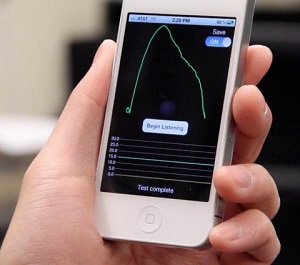
Shwetak Patel, a Professor of Computer Science & Engineering and Electrical Engineering at UW said: "We wanted to be able to measure lung function on any type of phone you might encounter around the world -- smartphones, dumb phones, landlines, payphones. With SpiroCall, you can call a 1-800 number, blow into the phone and use the telephone network to test your lung function."
The 1-800 number would be useful for people who do not have funds to call and can call for free, meaning that the product also benefits the low-income communities of the world. "People have to manage chronic lung diseases for their entire lives. So there's a real need to have a device that allows patients to accurately monitor their condition at home without having to constantly visit a medical clinic, which in some places requires hours or days," said Mayank Goel, a UW engineering doctoral student.
The team also reportedly printed a 3-D printed whistle that would make up for the bad call quality on some telephones and give the researchers a clearer idea of a patient's lung function. And it would help patients who are unable to utilize their vocal chords to produce a loud breathing sound effect that is needed in spirometry.
- Details
- Written by: Quintus Potgieter
- Category: Developments
It was just the other day when tech leaders all converged on Barcelona for the Mobile World Congress in February. The hot topic was the inevitable Internet of Things and what kind of internet connections the world is going to have to have to accommodate it. The word of caution was that 5G networks would have to be here by 2020, which analysts are estimating as the year that IoT reaches its full potential. You can read our story on that HERE. The world now faces connectivity issues for virtual reality, self-driving cars, home appliances, automated industrial plants and more if the move to 5G is not made.
QZ spoke to Asha Keddy, general manager of mobile standards for advanced tech at Intel. She said:
"These next-generation networks and standards will need to solve a more complex challenge of combining communications and computing together so intelligence is at your fingertips and available to the machines that make up the internet of things. The 2G networks were designed for voice, 3G for voice and data, and 4G for broadband internet experiences. With 5G, we'll see computing capabilities getting fused with communications everywhere, so trillions of things like wearable devices don't have to worry about computing power because network can do any processing needed."
 In the United States this summer, Verizon, and AT&T are planning to test out their 5G networks. According to Bloomberg, 5G networks will be generation billions of dollars for the early adopters such as Nokia, Oyj, Ericsson, Qualcomm Inc. and of course the aforementioned Intel.
In the United States this summer, Verizon, and AT&T are planning to test out their 5G networks. According to Bloomberg, 5G networks will be generation billions of dollars for the early adopters such as Nokia, Oyj, Ericsson, Qualcomm Inc. and of course the aforementioned Intel.
Chief Executive Officer Hans Vestberg, told Bloomberg: "5G is not about another G with super-fast Internet. 5G is about beyond smartphones and tablets. We think 5G could provide an excellent opportunity to transform our world."
The global expenditure on 5G networks will be $400 billion says Chetan Sharma Consulting. AT&T will be one of the first mobile operators to test out the technology. According to DSLReports, the first round of tests will be happening in Austin and New Jersey. They will be testing "millimeter wave components and/or modified existing millimeter radios." Tom Keathley, SVP of Wireless Network Architecture & Design at AT&T said the testing will start at 15GHz and move up to 28GHz.
Even Facebook is relying on the rollout of 5G being successful. Facebook's vice president of engineering said: "The hope is that this will lead to better wireless networks -- wireless networks that can keep up with all the stuff we're doing on our cell phones, from listening to music and watching videos too, yes, diving into virtual reality. These really immersive experiences are all looming."
For a clearer picture of how 5G will be assisting the Internet of Things, check out this video:
- Details
- Written by: Quintus Potgieter
- Category: Education
Good advice for engineering graduates - who are now entering the workplace - comes in many forms and from many industry professionals. Older engineers who have been in the industry for a long time, also need good advice so that they can remain in the positions they currently hold. Engineering UK estimates that 65 % of engineering graduates find employment within six months. According to Engineering and Technology Magazine STEM qualifications have been in-demand for jobs that don't even pertain to engineering, and so, the draw card of a 'fat-salary' takes engineers out of the industry and employs them in financial sectors. Allegedly one in nine employed graduates is working in engineering professions.
Marcus Body, speaking to Engineering and Technology Magazine, said: "Reality is every year, virtually every grad role is filled -- it's just that despite all this talk of skills shortages, the engineering schemes aren't big enough to recruit all graduates. So they go and do other things because there literally aren't enough jobs for all of them to get in engineering."
It seems the trick for graduating engineers getting into the profession, or older engineers wanting to stay in the profession, is broadening the skillset. DesignNews writer Jacob Beningo published an article detailing the 7 skills every engineering grad needs, to be successful.:
- Networking
- Resume Writing
- Cover Letter Writing
- Interviewing
- Salary negotiation
- Communication
- Entrepreneurship
 We have covered these skills extensively on EngineeringCareer.org, except for one skill that seems to be under-emphasised: Networking.
We have covered these skills extensively on EngineeringCareer.org, except for one skill that seems to be under-emphasised: Networking.
The Dean of Engineering at the Engineering Institute of Technology, Steve Mackay, has also underlined the importance of networking in the industry. In his YouTube series, the Engineering News Network, he said: "One of the amazing things you can do is build up a network of colleagues and friends. You start doing that when you are at college and university and you keep building it up. The network of friends and colleagues will actually help you get employment or point you towards opportunities."
Mackay also says that over 70% of opportunities are not advertised widely on job sites and are rather found through the networking an engineer has done. "One of the most amazingly important things in your career armory is to have a network. To keep building it, maintaining it and working it and to be part of the network to help other colleagues that might need jobs or opportunities."
- Details
- Written by: Quintus Potgieter
- Category: Industry
It was the start of the weekend in Nairobi, Kenya, on Friday the 29th of April, 2016. Tragedy struck the capital city when a six-storey building collapsed due to a storm. The death toll has risen to 21 in an event that will raise questions about the civil engineering practices of Kenya and their safety.
According to News24, the Kenyan Red Cross said 60 people remained missing, meaning the death toll could be much higher. The police, however, spoke to media and said that 121 people had been rescued by the 30th of April.
 After four days, a child was rescued from the rubble according to a tweet Kenya Red Cross sent out.
After four days, a child was rescued from the rubble according to a tweet Kenya Red Cross sent out.
Then, on Monday, the owner of the collapsed building was arrested. The owner's name is Samuel Karanja Kamau and appears in court, today, the 3rd of May.
According to BBC News, the officials who approved the construction of the six-storey building in what is considered to be a low-income part of Nairobi would be fired effective immediately.

Kenyan President Uhuru Kenyatta handed down the order for the owner to be arrested. The Deputy Governor of Nairobi spoke to media, saying: "At least seventy percent of buildings are erected without proper certification especially in areas like this." The district in question is the Huruma district in Kenya's capital.
The people of Kenya are calling on the government to review the practices in civil engineering in the country so that these sorts of tragedies do not happen again.
Speaking to All Africa, a Kenyan architect, Peter Mungai said: "In many upcoming buildings, county by-laws are disregarded. You'll be shocked to find that permits are granted for questionable projects with the people mandated to monitor buildings processes rarely on site." The website also references an unconfirmed study that reportedly states that between 2006 and 2014, 17 buildings collapsed in Kenya.
The Dean of Engineering at the Engineering Institute of Technology, Steve Mackay, has called the collapse of the building 'horrific'. He said: "Civil engineers and structural engineers have a critical job to perform. The job is to design structures that are safe at all times, no matter what stressors happen." He also says that engineers only work to the limit of their knowledge. "Whenever you've got some doubts about the environment in which you're working, put in additional safety factors or go back to the labs and do further testing. If you're building a structure such as a bridge or a building, safety is paramount."
- Details
- Written by: Quintus Potgieter
- Category: Industry
The online crypto-currency, Bitcoin, is no doubt an impressive feat of engineering minds coming together and creating something that has the ability to change the world. However, the engineers behind it and who in fact created Bitcoin was not known. That all changed on the 2nd of May, 2016.
Craig Wright, an Australian cryptographer, says he is behind the Bitcoin currency. WIRED spoke to the chief scientist of the Bitcoin Foundation and one of the programming engineers who worked on the early stages of Bitcoin and confirmed that Wright is definitely who was thought to be Satoshi Nakamoto.
Satoshi was a fake name that Wright gave as a pseudonym while a group of engineers and cryptographers worked on the currency. Andersen wrote a blog post conceding that the man known as Satoshi Nakamoto, was in fact, Craig Wright, in a blog post. He said:
I hope he manages to mostly ignore the storm that his announcement will create, and keep doing what he loves -- learning and researching and innovating.
I am very happy to be able to say I shook his hand and thanked him for giving Bitcoin to the world.
 Wright did not adopt an 'I in team' approach to talking about how Bitcoin was set up. He said, "I was the main part of it, but other people helped me."
Wright did not adopt an 'I in team' approach to talking about how Bitcoin was set up. He said, "I was the main part of it, but other people helped me."
Jon Matonis, an economist and founding director of the Bitcoin Foundation said: "During the London Proof sessions, I had the opportunity to review the relevant data along three district lines: Cryptographic, social and technical. It is my firm belief that Craig Wright satisfies all three categories."
Wright praised the community that assisted and grew Bitcoin into what it is today. In a blog post, he wrote:
You have dedicated vast swathes of your time, committed your gifts, sacrificed relationships and REM sleep for years to an open source project that could have come to nothing. And yet you still fought. This incredible community's passion and intellect and perseverance has taken my small contribution and nurtured it, enhanced it, breathed life into it. You have given the world a great gift. Thank you.
Source: BBC/Wired
- Details
- Written by: Steve Mackay
- Category: Blog - Steve Mackay
If you build any sort of process or machine control system there is a very good chance that when you first put it into service or test it you will be plagued by some kind of ‘bug” either in the wiring or in the software. The proper term (for such bugs) is: “Systematic Error in Design”
Dear Colleagues
If you build any sort of process or machine control system there is a very good chance that when you first put it into service or test it you will be plagued by some kind of ‘bug” either in the wiring or in the software. The proper term (for such bugs) is: “Systematic Error in Design”
I am grateful to Dave Macdonald, our safety control systems expert (and author of three highly praised books on the topic) who has kindly put together a short note on systematic errors, which is worth reading whether you are designing a control system for an instrumentation, mechanical or electrical system.
Some thoughts (by Dave) on Systematic Errors in Control Systems
Most of us are familiar with the routine of version upgrades or specification revisions. It’s not too big a problem for a control system on a production process. “Sorry, just hold on a few minutes! ” Says the control engineer “but I didn’t quite understand what you wanted”.
But it’s a different story if the bug is dormant in a functional safety system, better known as a safety instrumented system (SIS) or emergency shutdown system. We can’t afford to have a wrong response just when the plant is about explode! So it’s not surprising that SIS projects involve some heavy duty quality assurance work to try to minimize the chances of systematic errors creeping into the design.
Some examples may help us to see the problem:
1. Faulty trip logic: An error in the trip logic diagram may not be revealed by testing the SIS as the faulty response will be built into the safety system. Testing the diagram with the (independent) process engineer might be a good idea here.
2. Not separating the safety sensor from the regular control sensor. Whatever goes wrong with the control loop will also afflict the safety function. We call this a common cause failure but it originates from a systematic design error.
3. Installing the trip sensor where it will not correctly read the process condition.
4. Failure to consider all possibilities when scoping a safety function. See below for a notorious example from the London Underground.

5. Safety controls often employ redundancy to ensure fault tolerance for random failures in the instruments. The benefits of doing this are significantly limited if the redundant instruments are identical since they may both suffer the same failure for the same reason.
A systematic failure example from my own experience: Two identical diaphragm seals for pressure transmitters on a distillation column failed together when a severe vacuum occurred during a shutdown. The diaphragms were stretched leaving a 30% zero offset on both transmitters. Not much help if one is for control and the other is for safety!
How can you avoid systematic errors?
- Always be on the alert for common cause failure possibilities between control and safety instruments. Always look for diversity between instruments on the same application.
- Use the best quality assurance methods in hardware specification and in application software projects. Check back at each step forward in the project.
- Apply the safety life cycle guidelines of IEC 61511 and then find someone who is genuinely independent of your project to review the project stages for pitfalls.
- Strictly manage all design modifications and evaluate them for impact on the original safety requirements.
The more you look at design projects, the more you see the potential for built in errors. Be alert!
Although the famous Economist, John Kenneth Galbraith, probably wasn’t thinking of systematic errors specifically, nonetheless this does apply: “If all else fails, immortality can always be assured by spectacular error”.
Thanks so much Dave Macdonald for this elegant dissertation above.
Yours in engineering learning
Steve
Mackay’s Musings – 3rd May’16 #598
780, 293 readers – www.eit.edu.au/cms/news/blog-steve-mackay
- Details
- Written by: Quintus Potgieter
- Category: Developments
An estimated 34 billion devices will be connected to the internet by 2020. The current number was 10 billion in 2015. IoT devices will make up 24 billion of the 34 billion.
- $6 trillion will be spent on IoT systems over the next five years.
- Businesses will be a top adopter of IoT solutions. For business, IoT will: 1) lower operating costs ; 2) increase productivity and 3) expand to new markets or develop new product offerings.
- Governments are focused on increasing productivity, decreasing costs, and improving their citizens' quality of life. They will be another huge adopter.
- Consumers will lag behind business and government in IoT adoption.

Gartner Research has also reported that there will be 500 networked devices connected by 2020. And Ericsson also said that they expect 50 billion connected IoT devices in 2020 as well. Jumping into the game as well were Intel and Samsung who announced the launching of their own cloud services to join the long list of companies functioning from the cloud.
Jim Tully, the Vice President of the Internet of Things at Gartner, spoke about the benefit of businesses implementing IoT strategies. In a weekly magazine show for Gartner, he said: "From surveys, we find that most of the roles that we speak with - in enterprises - have all heard of IoT. It's a familiar term. Relatively few enterprises have actually used IoT yet. That's largely because most of those enterprises don't see how IoT could lead to business benefits for their kind of organization."
Tully says the biggest issue that delays IoT solutions from picking up and could delay the numbers in 2020, is purely just the fact that it is new. He says the concepts are unfamiliar to enterprises and that is the confusing part for a lot of companies.
The importance of IoT in the future of manufacturing is said to be thrusting the world into another industrial revolution, and if companies do not adapt, they will be left behind. At least that is what the industry is saying and how fast the adoption of the Internet of Things is happening.
To find out why the Internet of Things is going to be invaluable in the manufacturing industry, Intel shows examples of how they would be powering a factory setup along with the Internet of Things:
Blog - Steve Mackay
EIT's Technical Director, Steve Mackay, enjoys keeping his blog up-to-date with useful tips and current industry matters for his fellow colleagues. He has a loyal and expanding following base reaching over 300,000 people around the world.
Student Stories
In this section you have the opportunity to read and listen to EIT students talking about the reality of the programs. Discussions are wide-ranging and include information about the study commitment required, the value of the qualification in their careers, the relevance of the subject matter, future pathways, and more. They provide valuable feedback for you to take into account before you decide to join one of our programs.
Career Information
Latest career information including industry research, podcasts, blogs, life hacks and general information about how you can make the most out of your career.
Education
Here you will find out more about the latest trends and developments within education worldwide, along with some helpful articles regarding study tips and keeping on track with your studies.
Developments
The latest innovation and inventions from the world of engineering can be found here. Learn about advances in technology and how they can make a real difference within your industry.
Announcements
Keep up to date with the latest announcements from the Engineering Institute of Technology. In this section you can read more about new courses, new recognition from professional bodies, our Excellence in Teaching Award, upcoming free webinars and much more.
Monthly Update
We understand that you may not have time to read all the articles that we post, so our monthly update gives you access to some fascinating articles which cover the best of the months news in a compact format.
Engineering Resources
The key objective of the Engineering Institute of Technology is to provide outstanding practical engineering and technology education. Together with several industry and educational partners we gladly share the following resources and information to assist you along your professional development path. Please note that some of the articles will open a new internet browser tab and redirect you to other partner websites.
